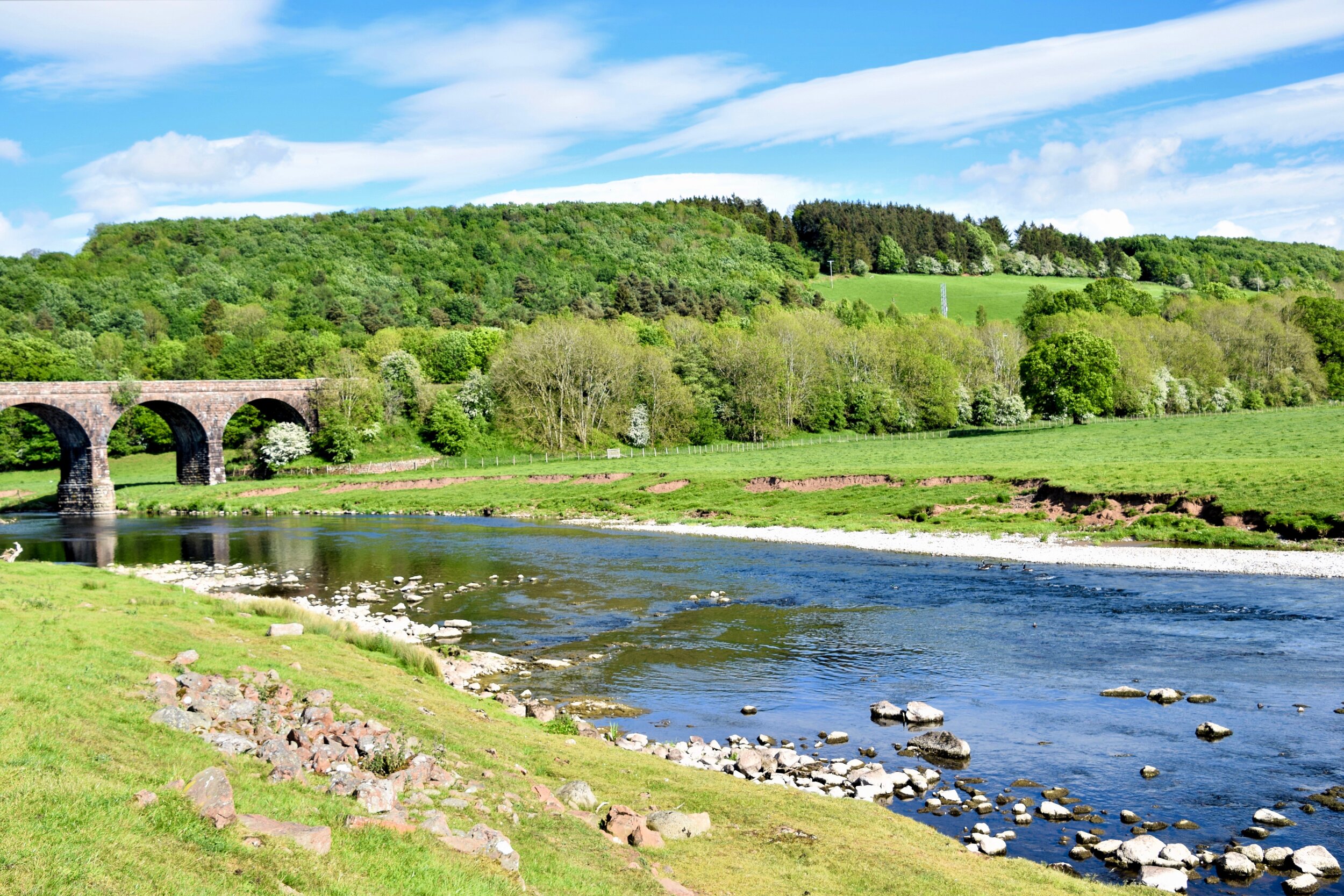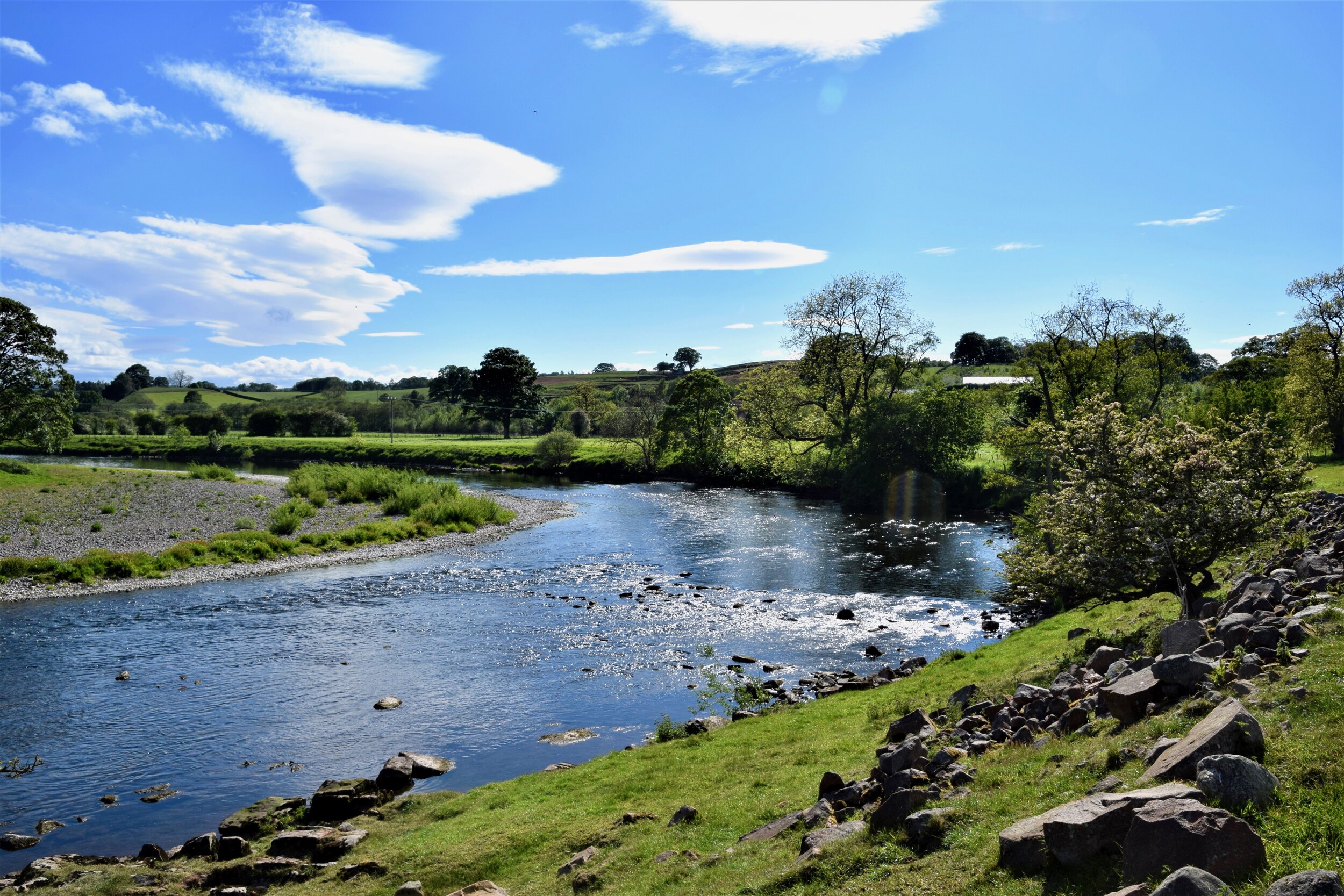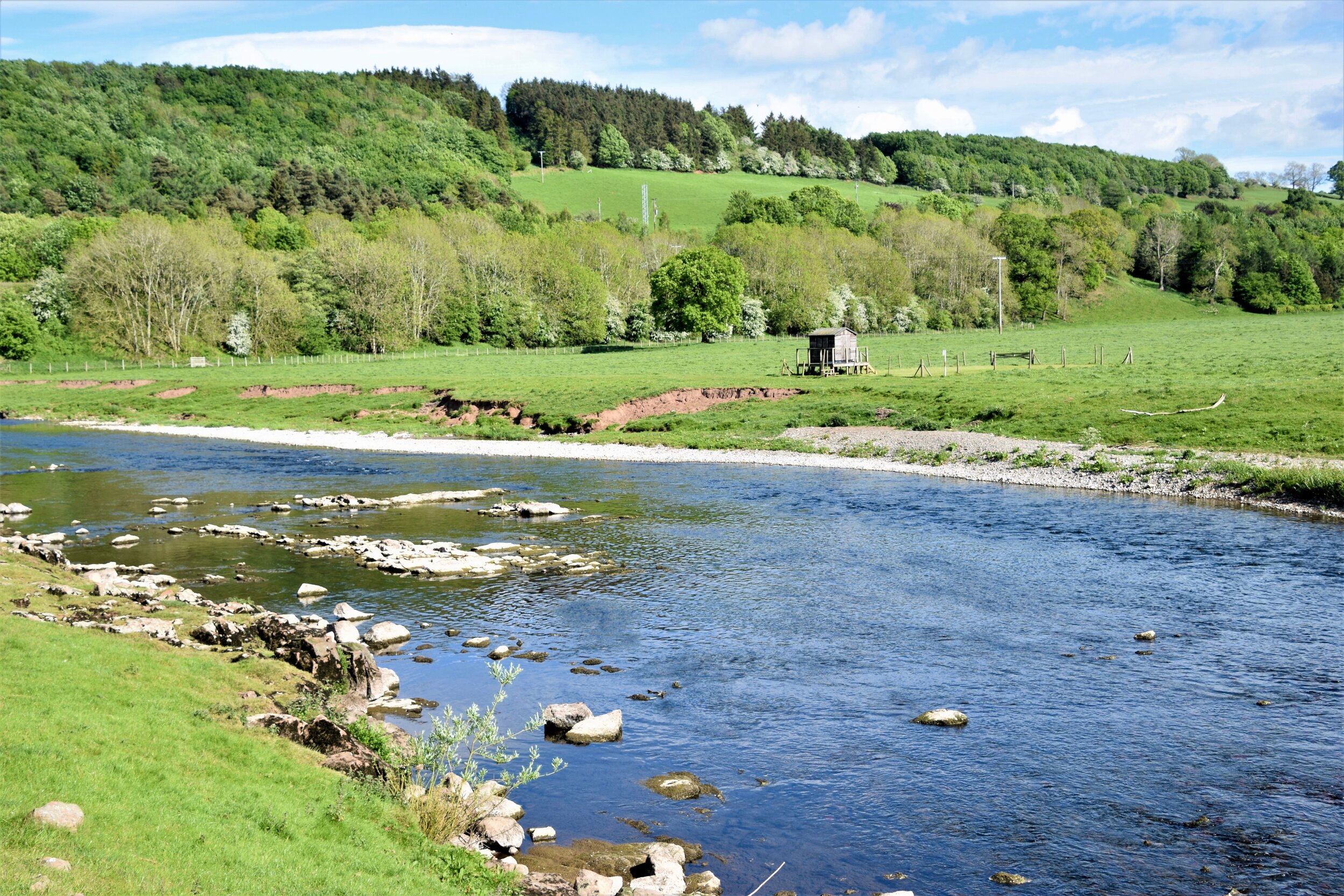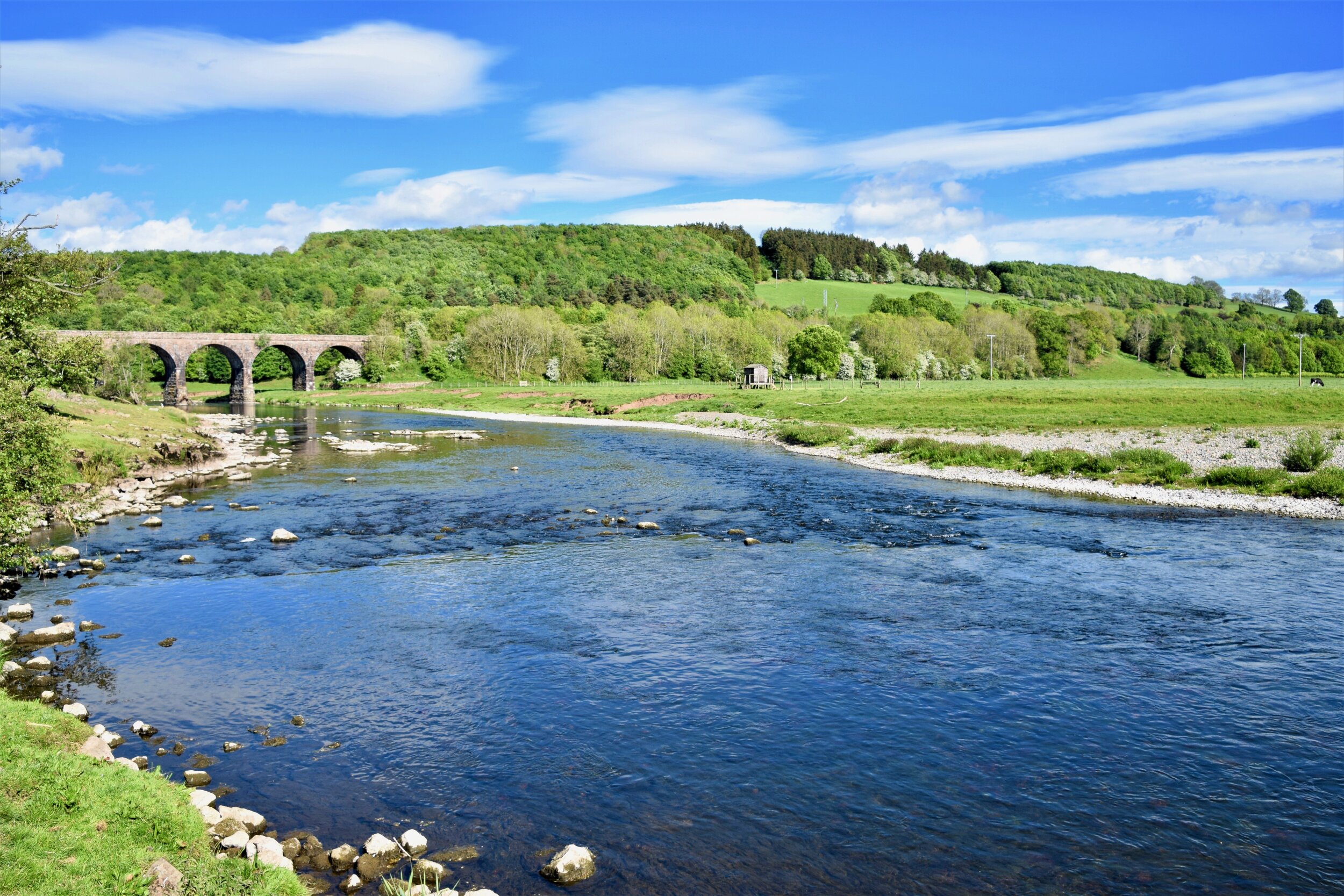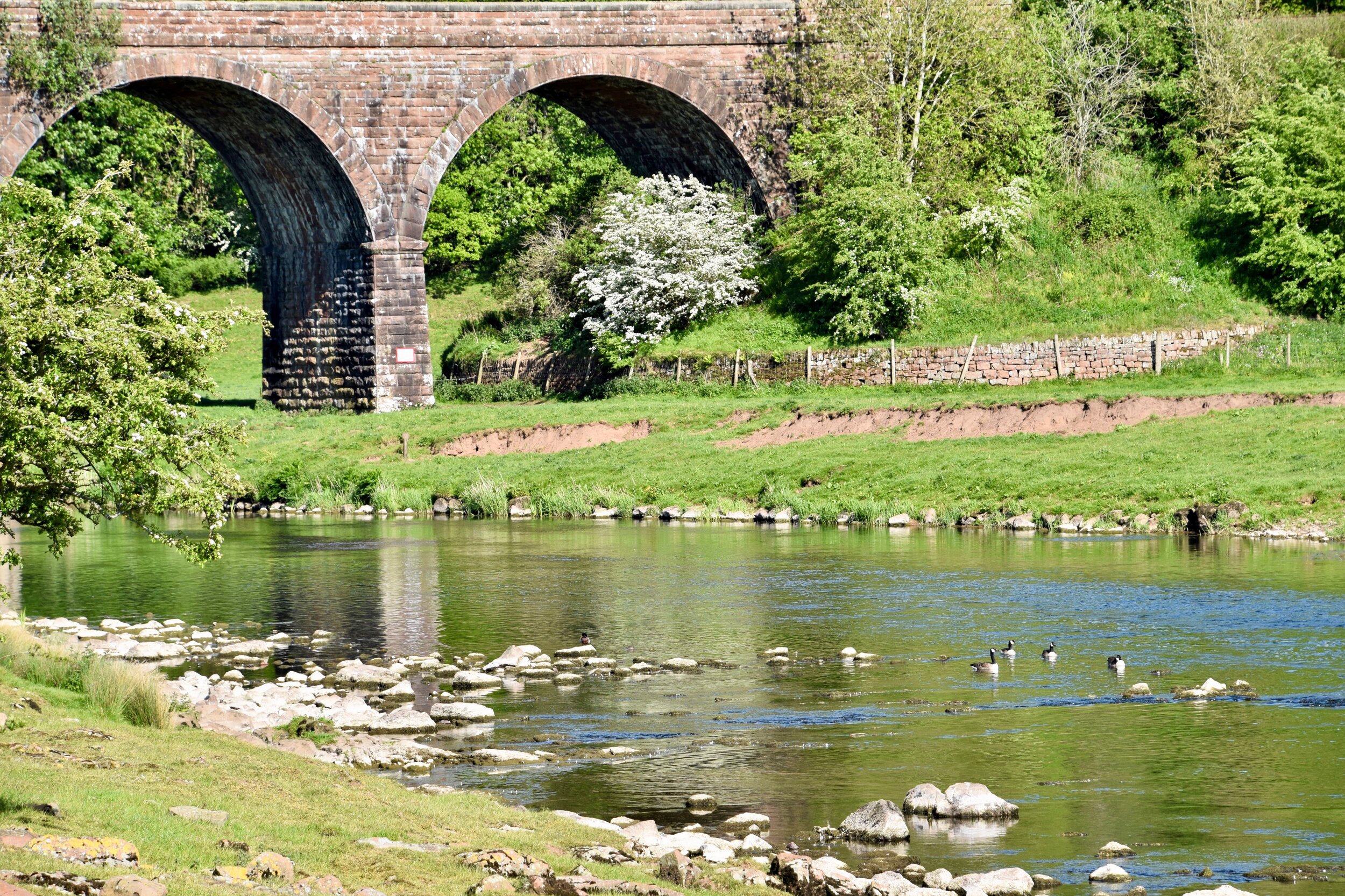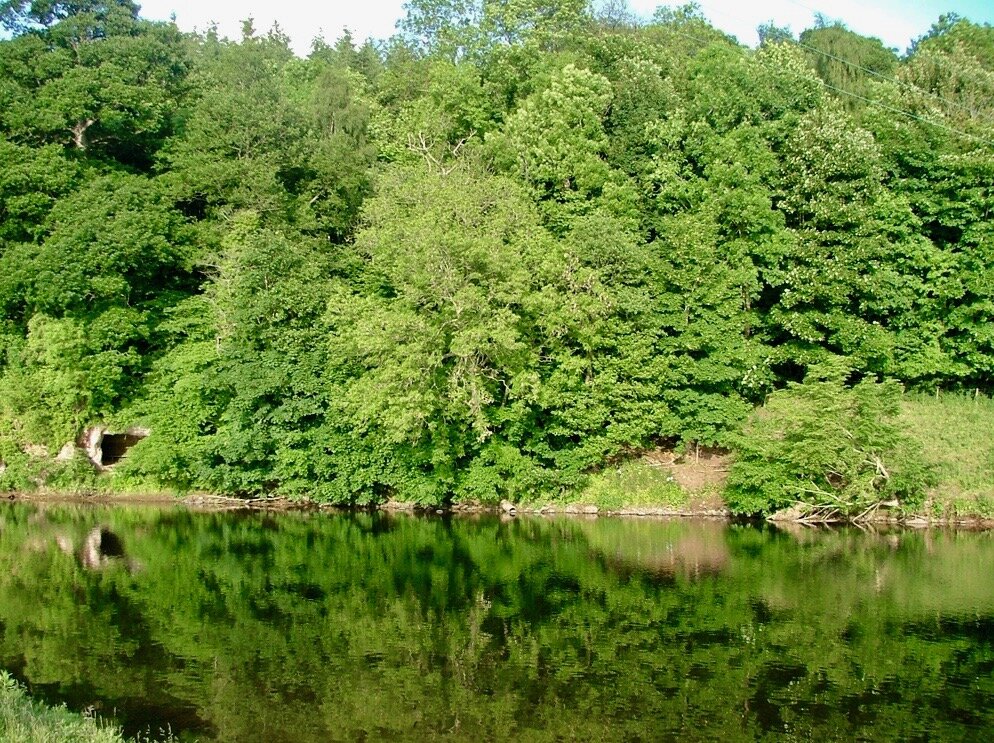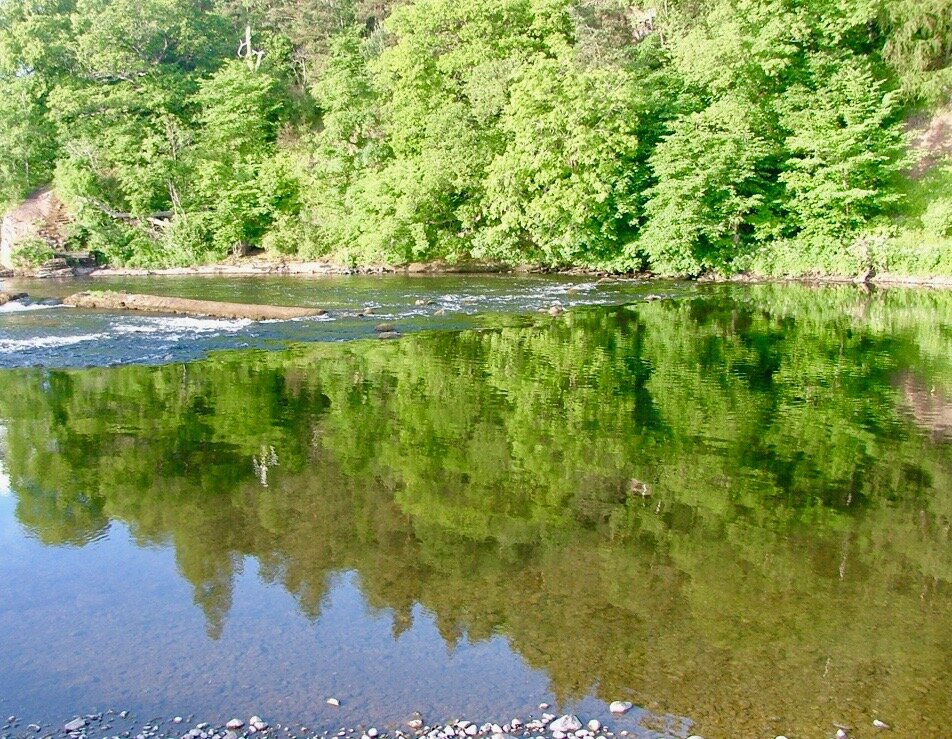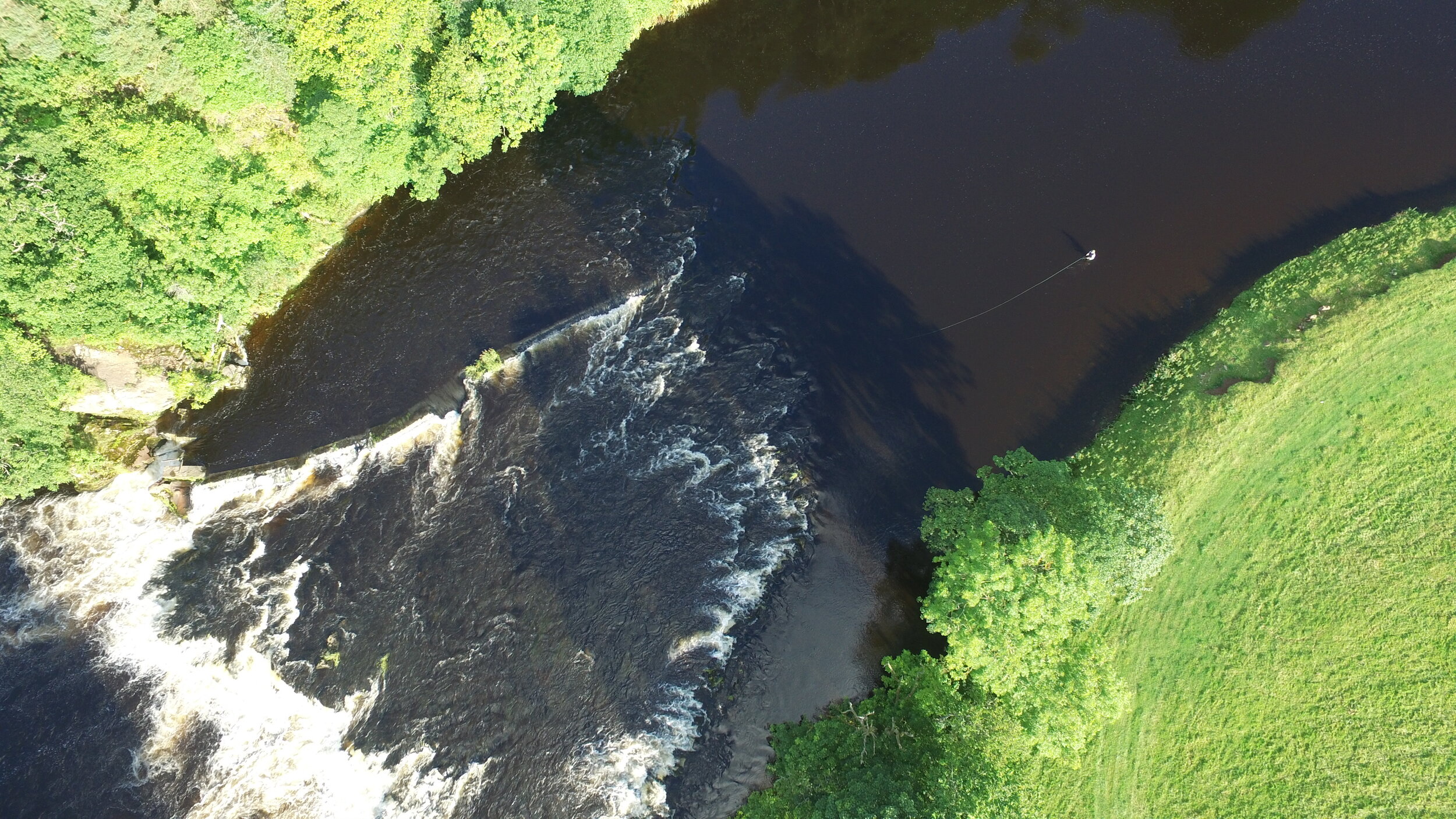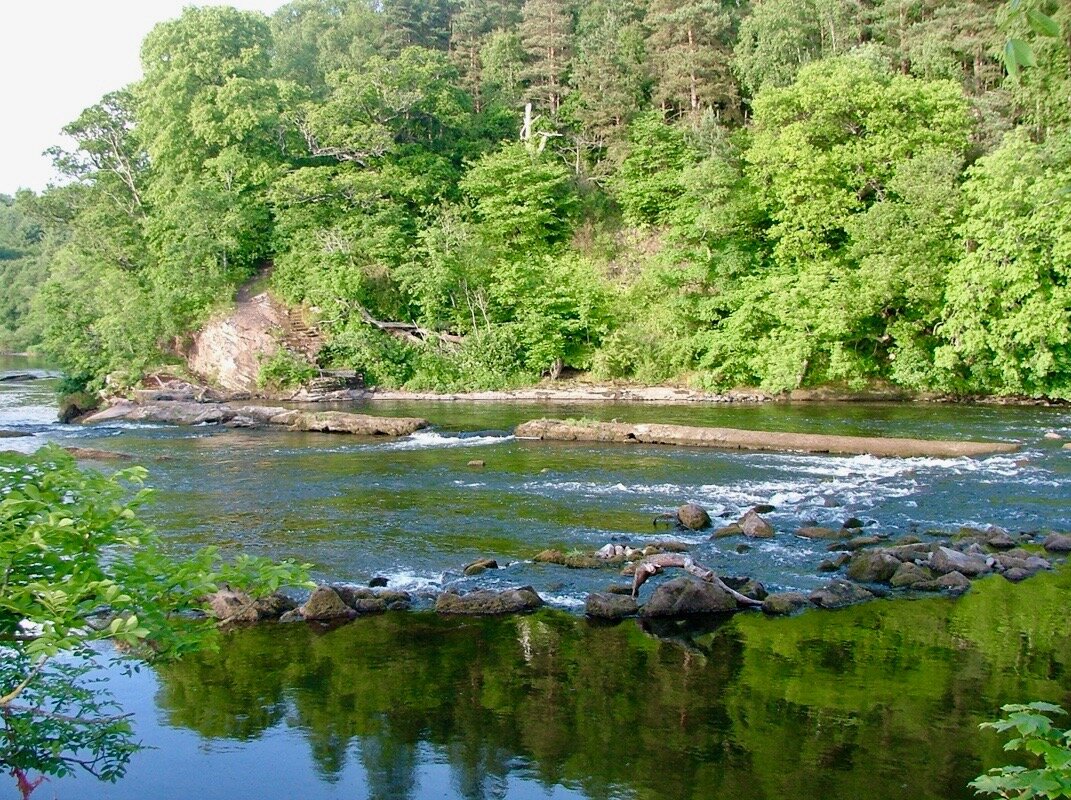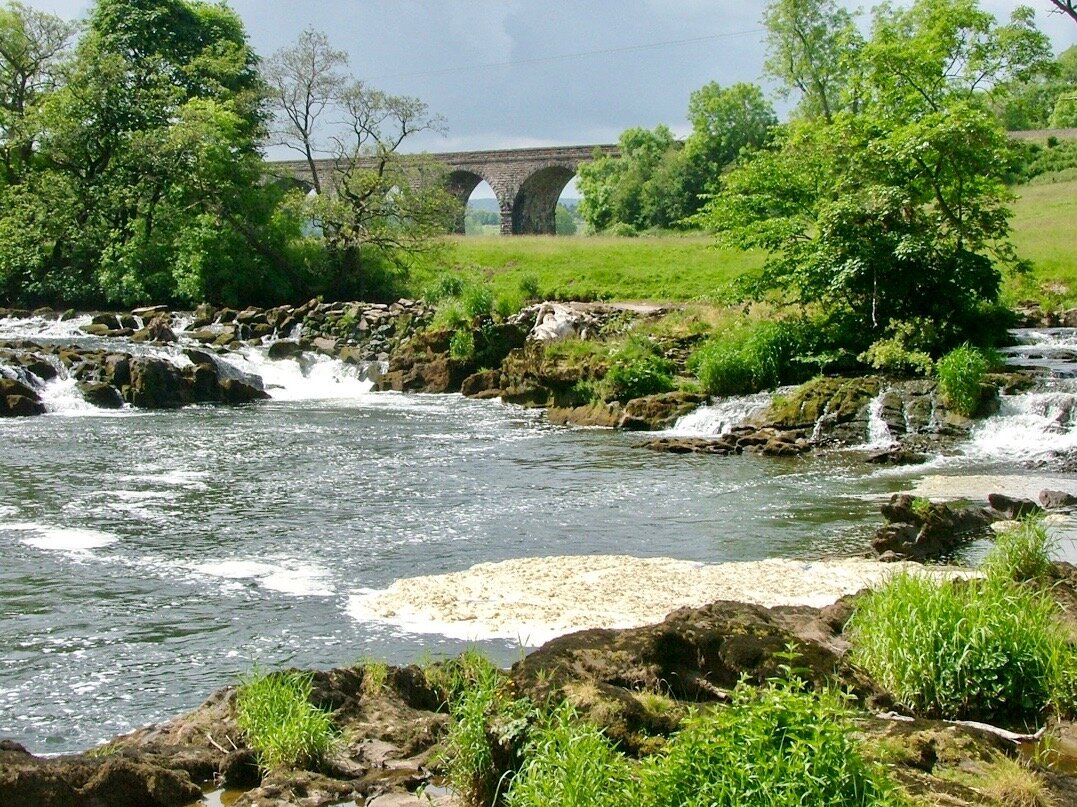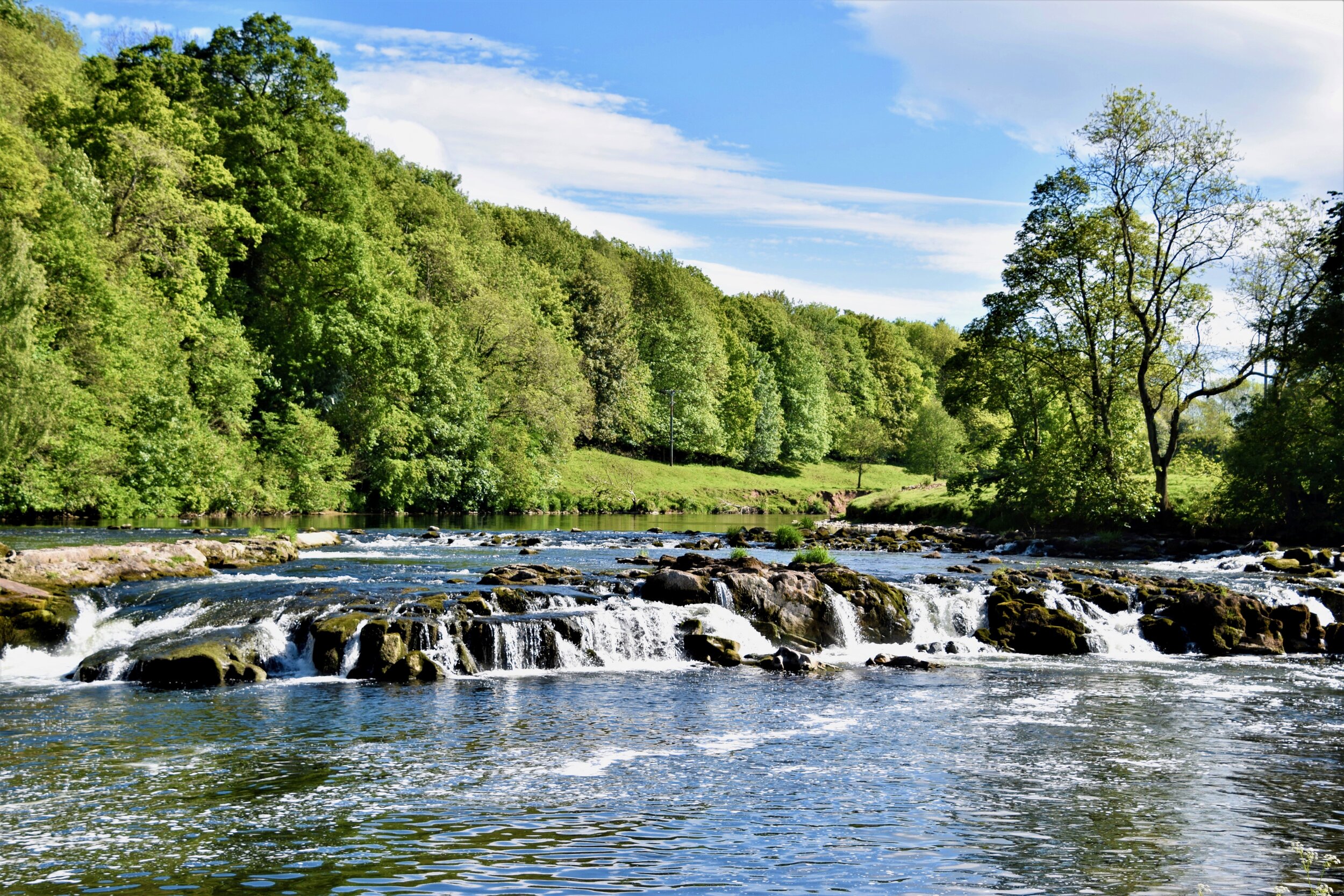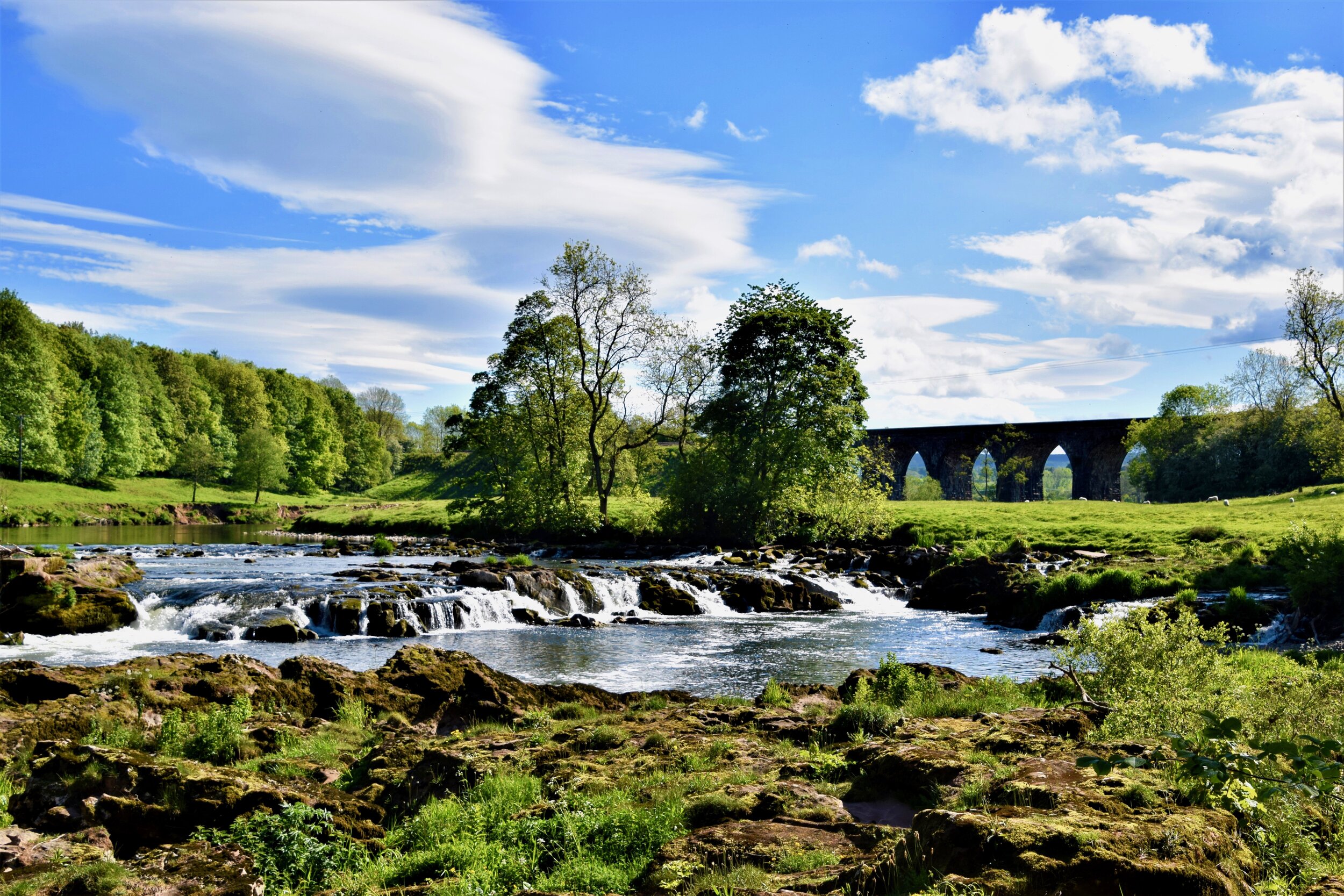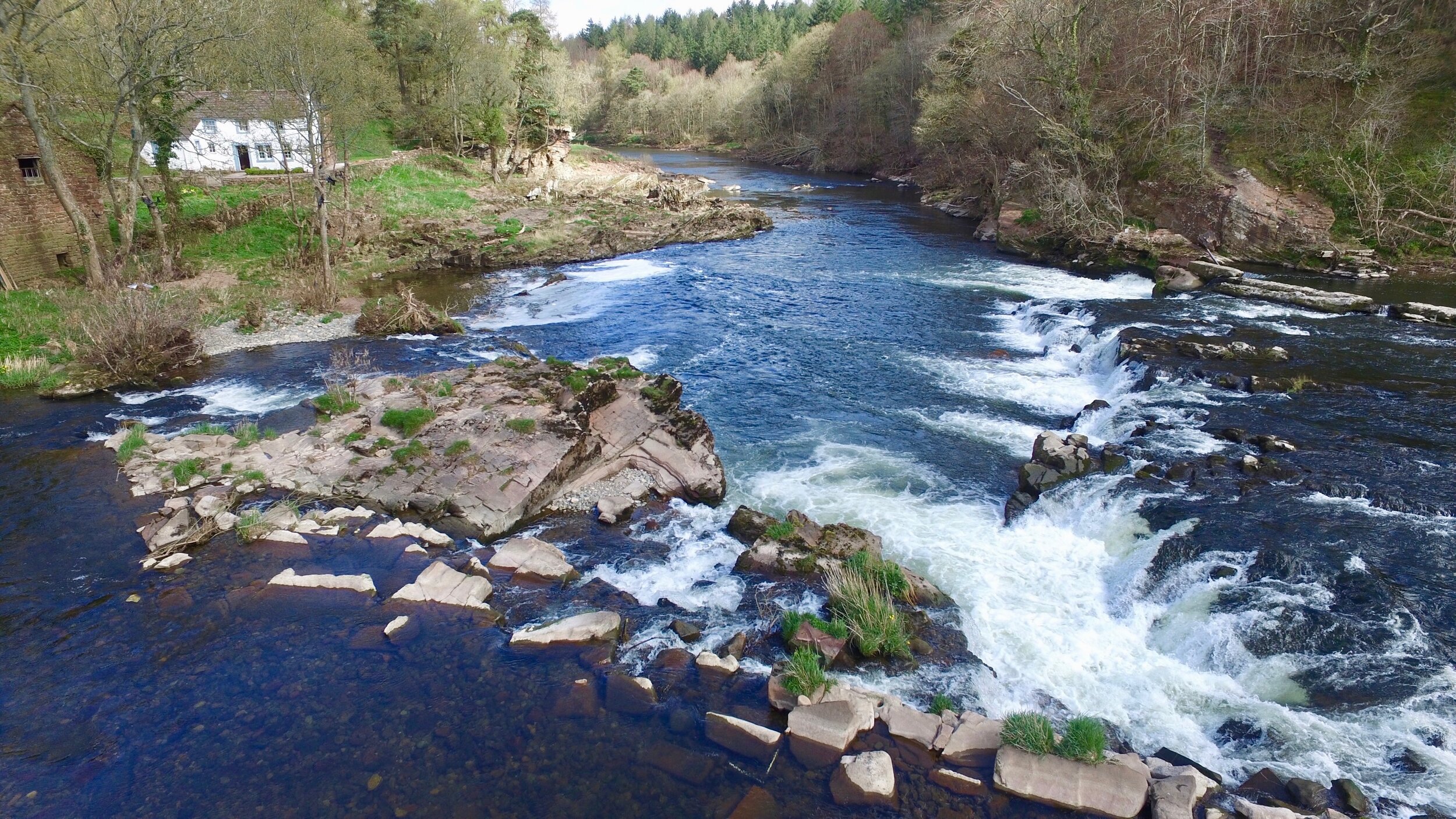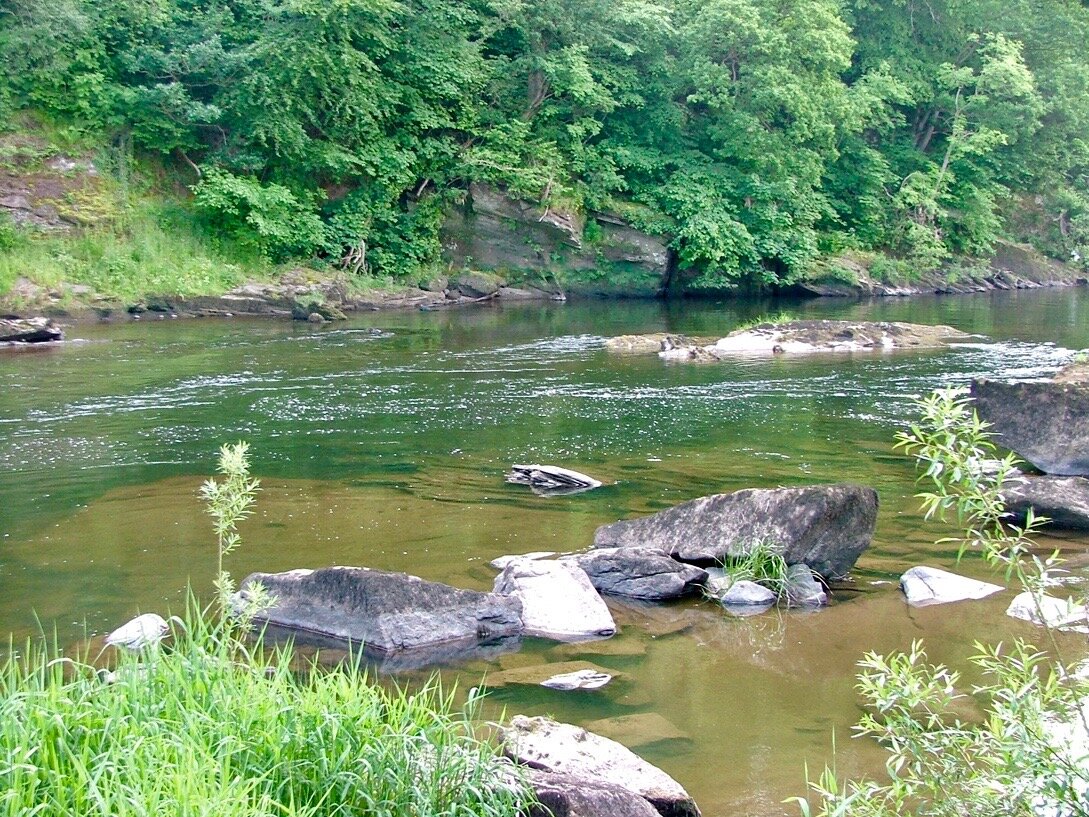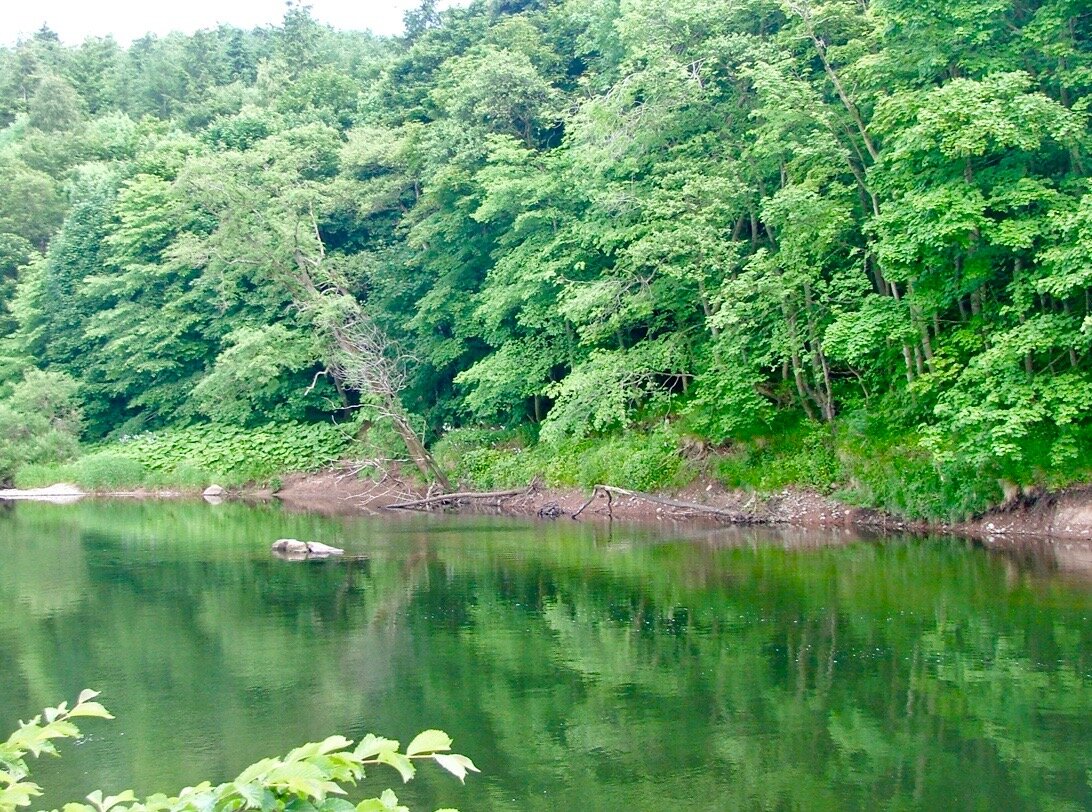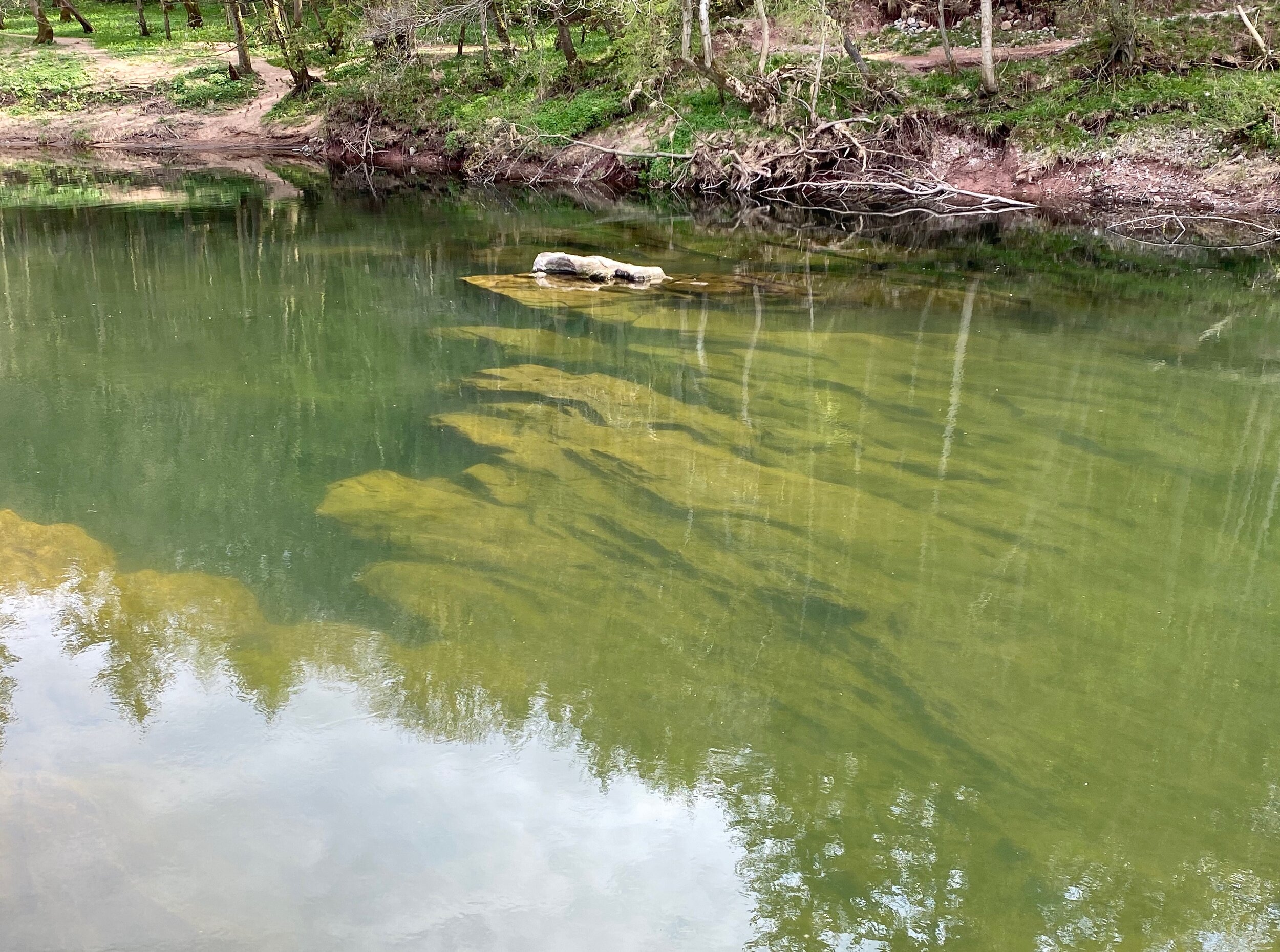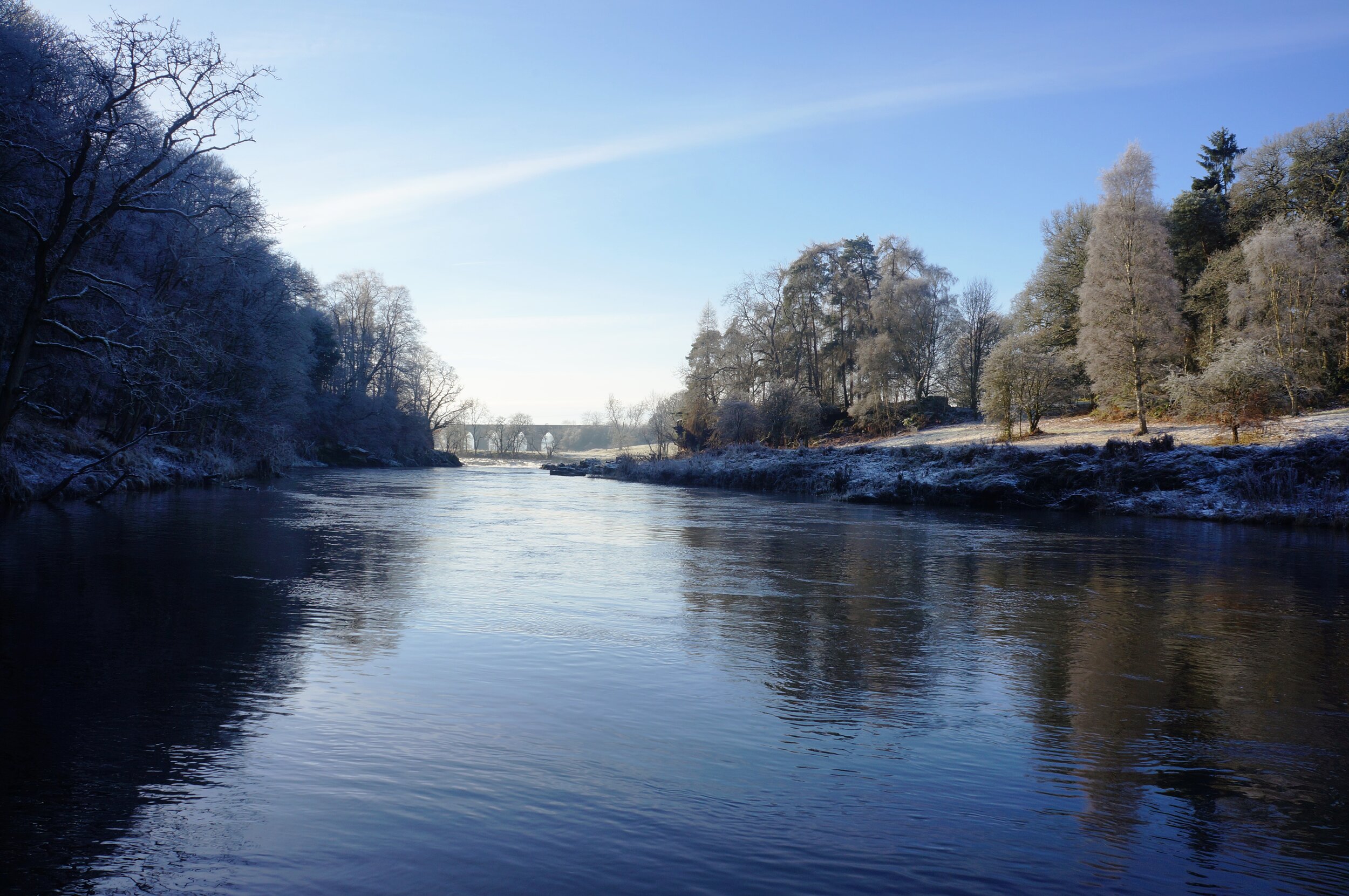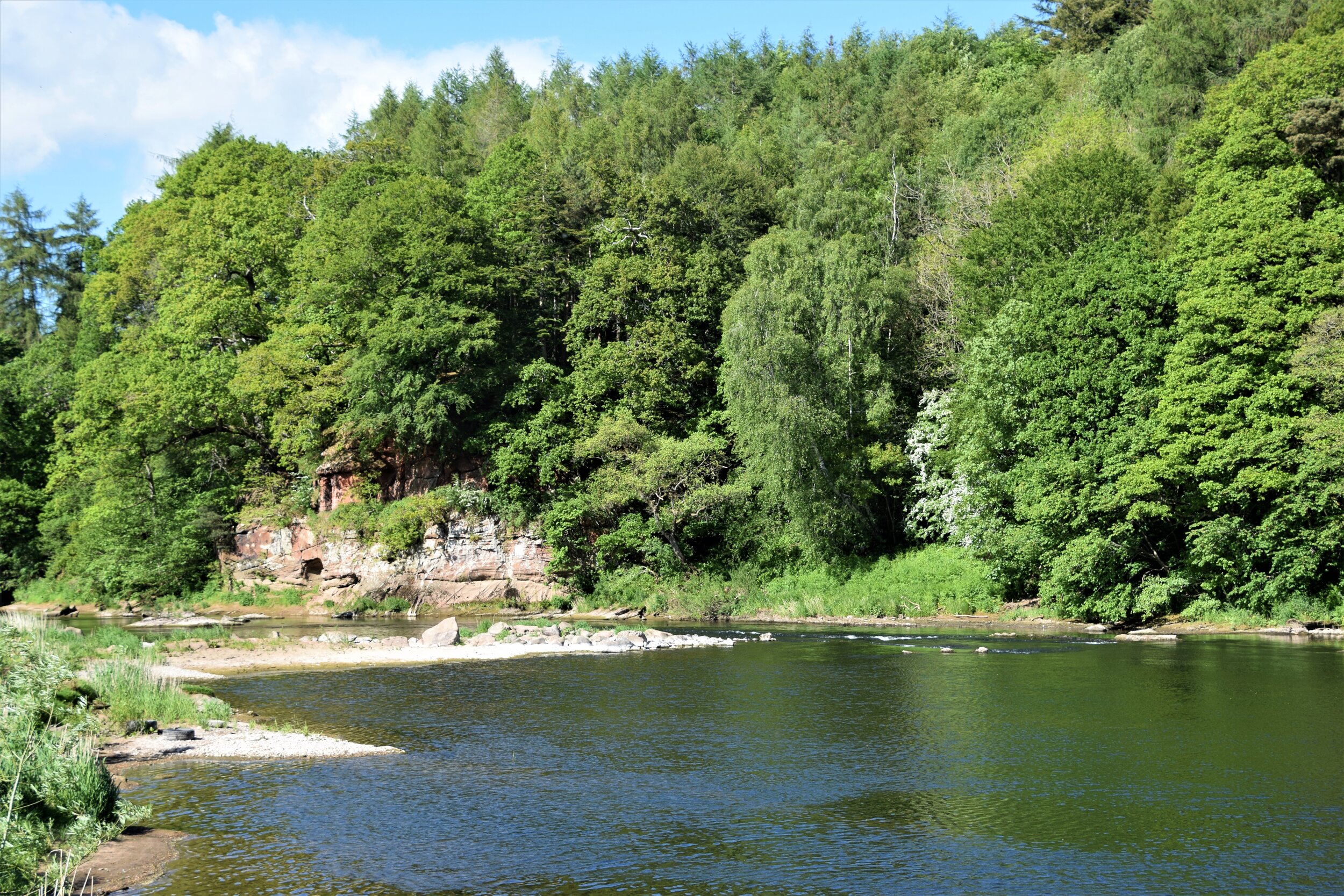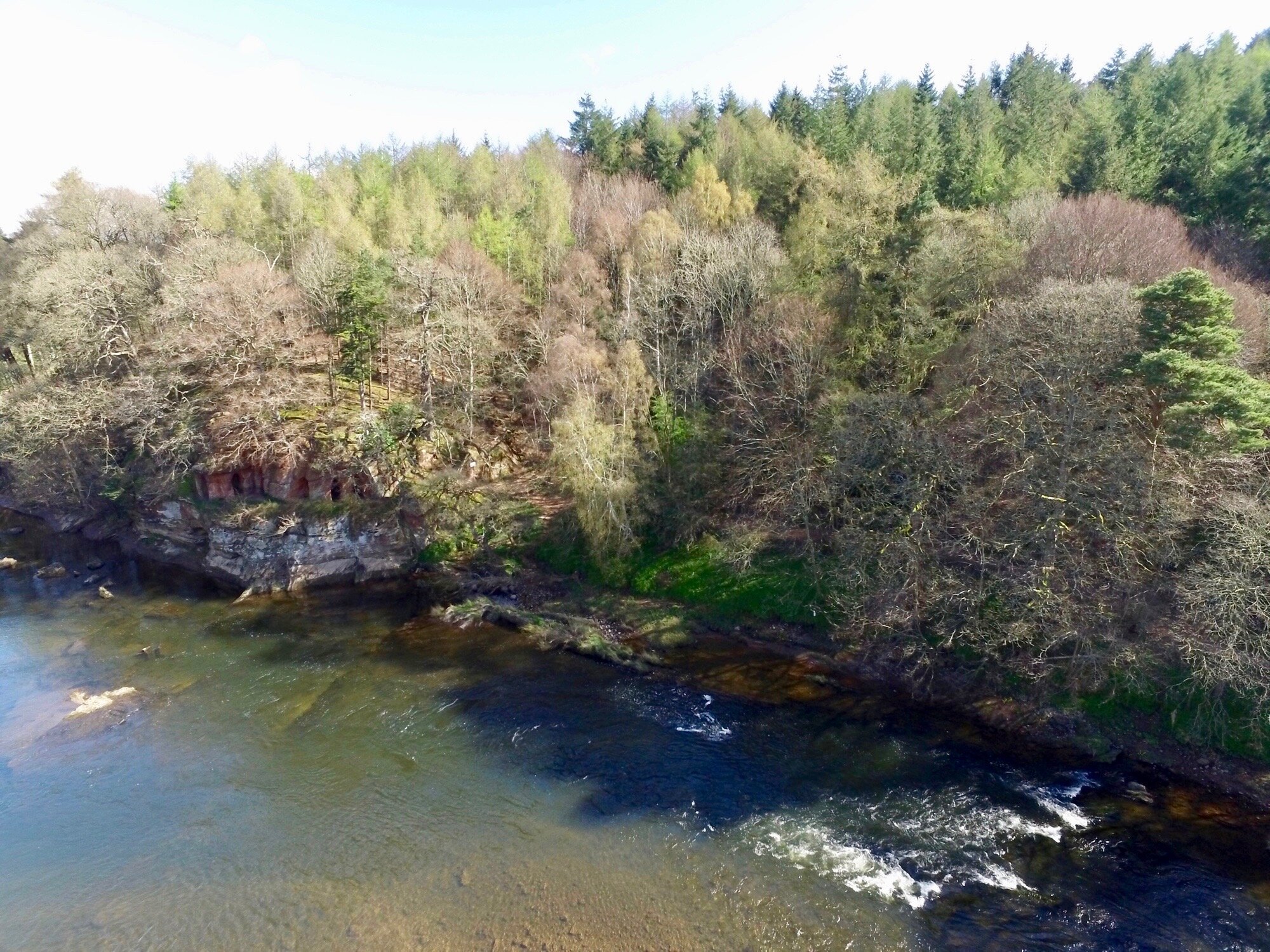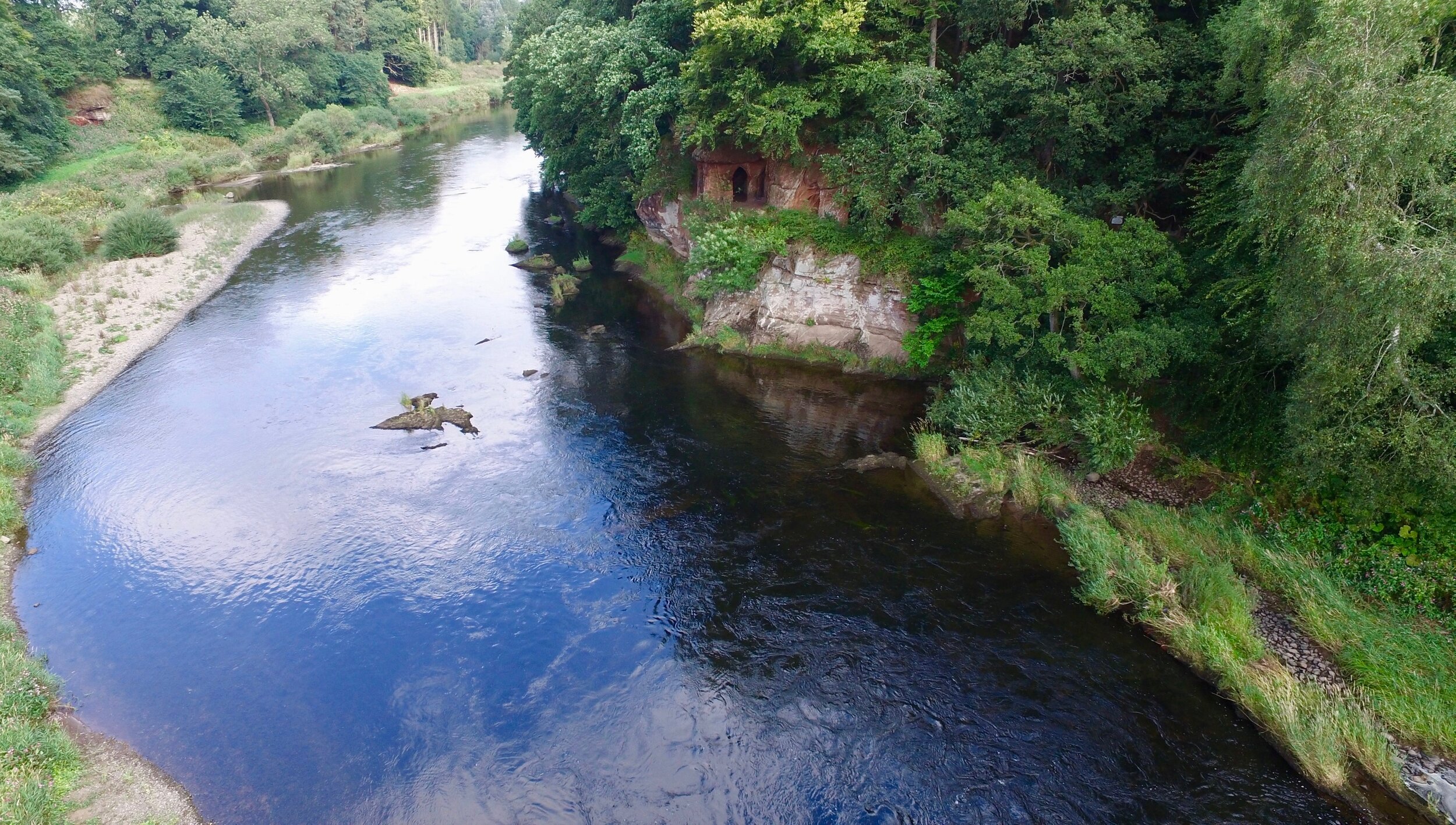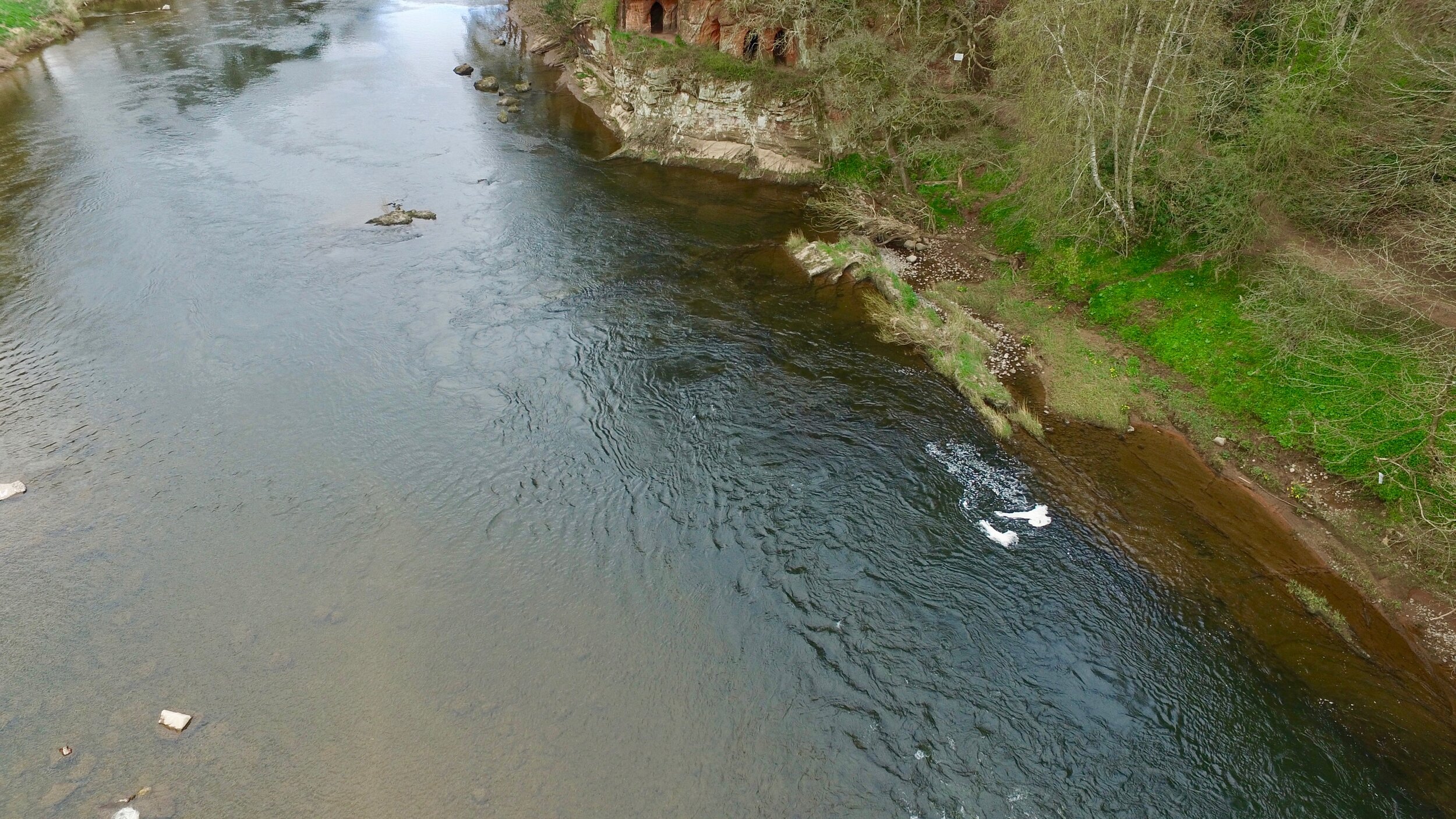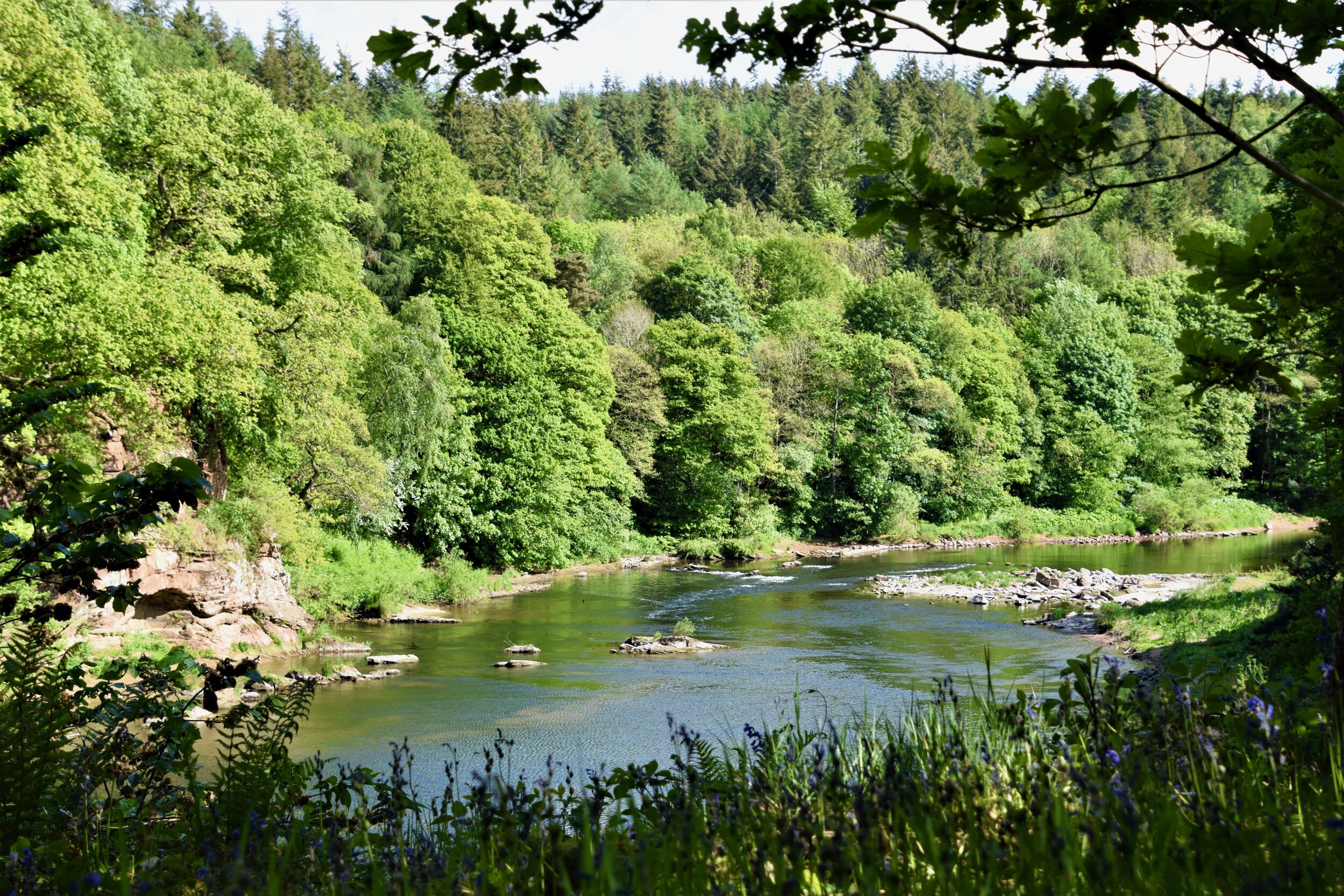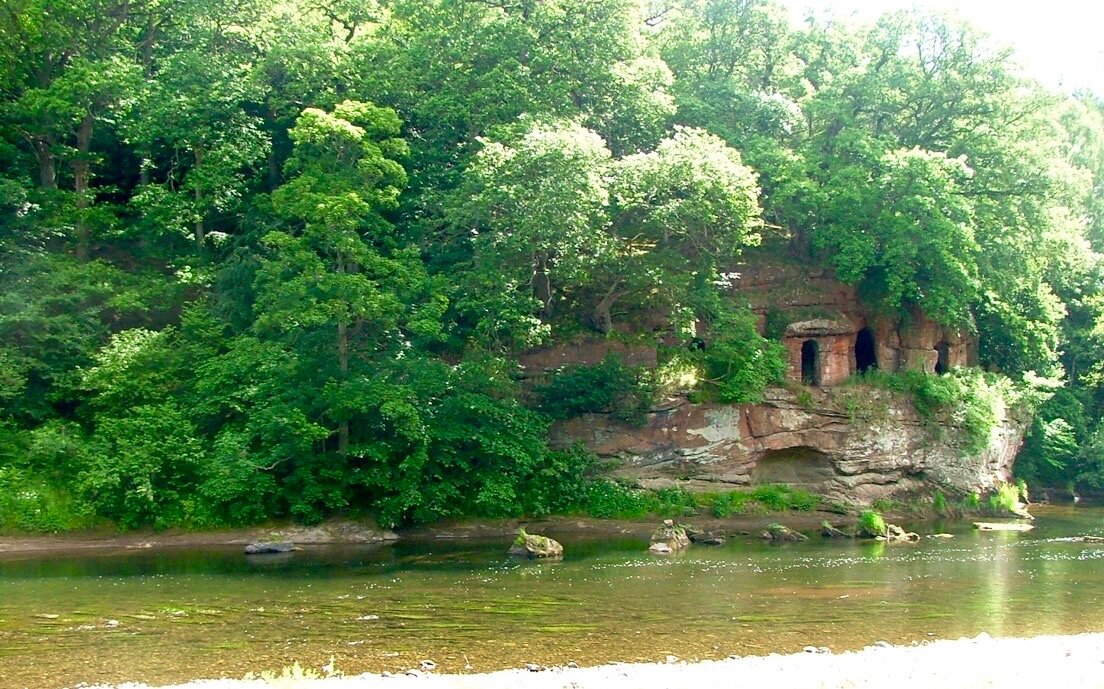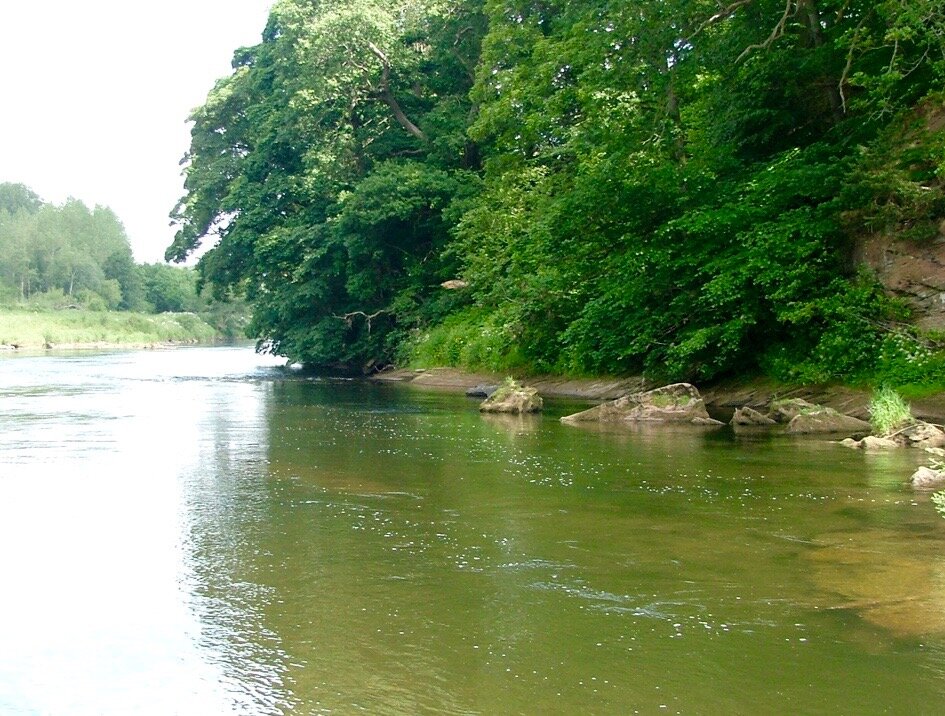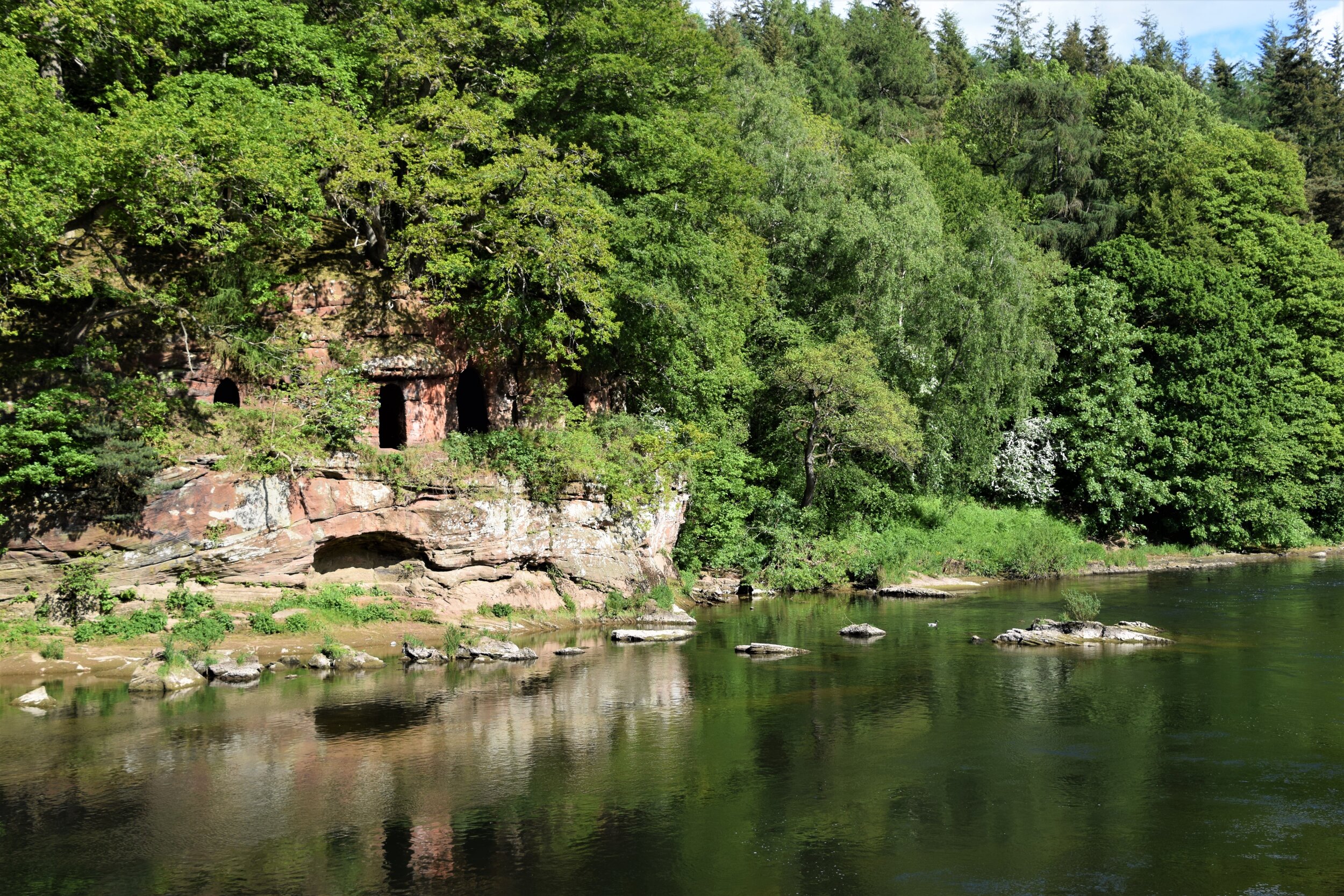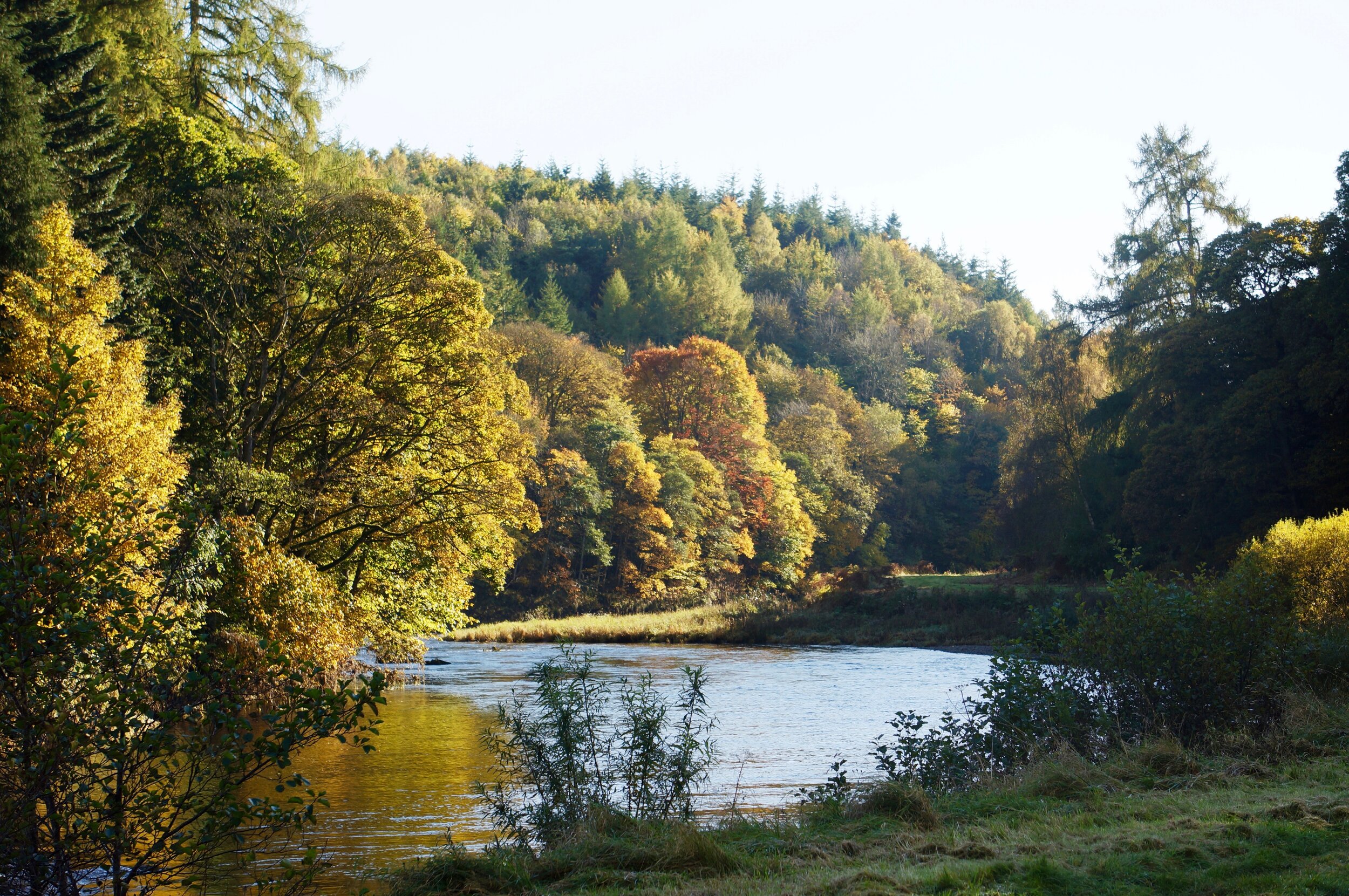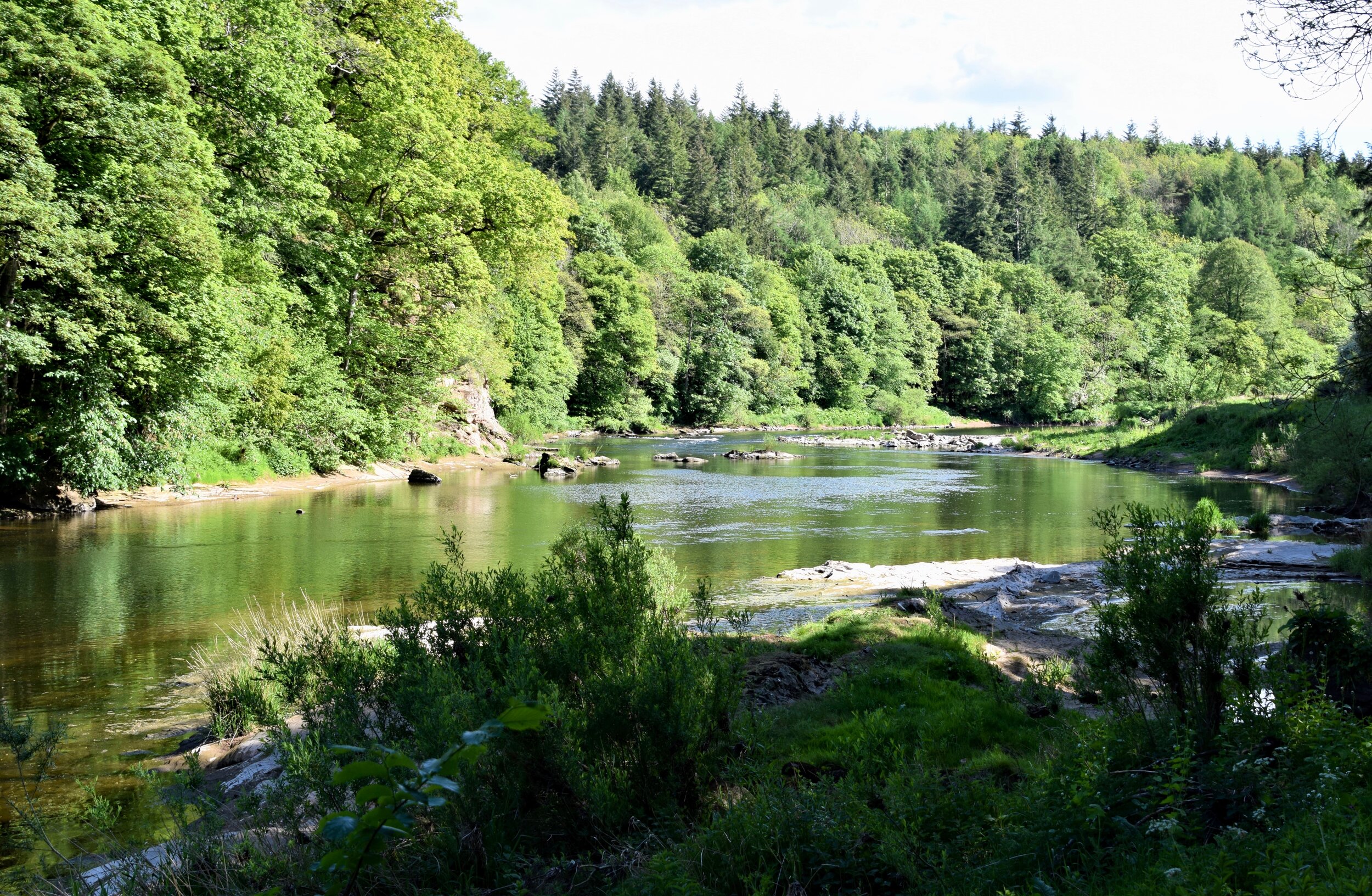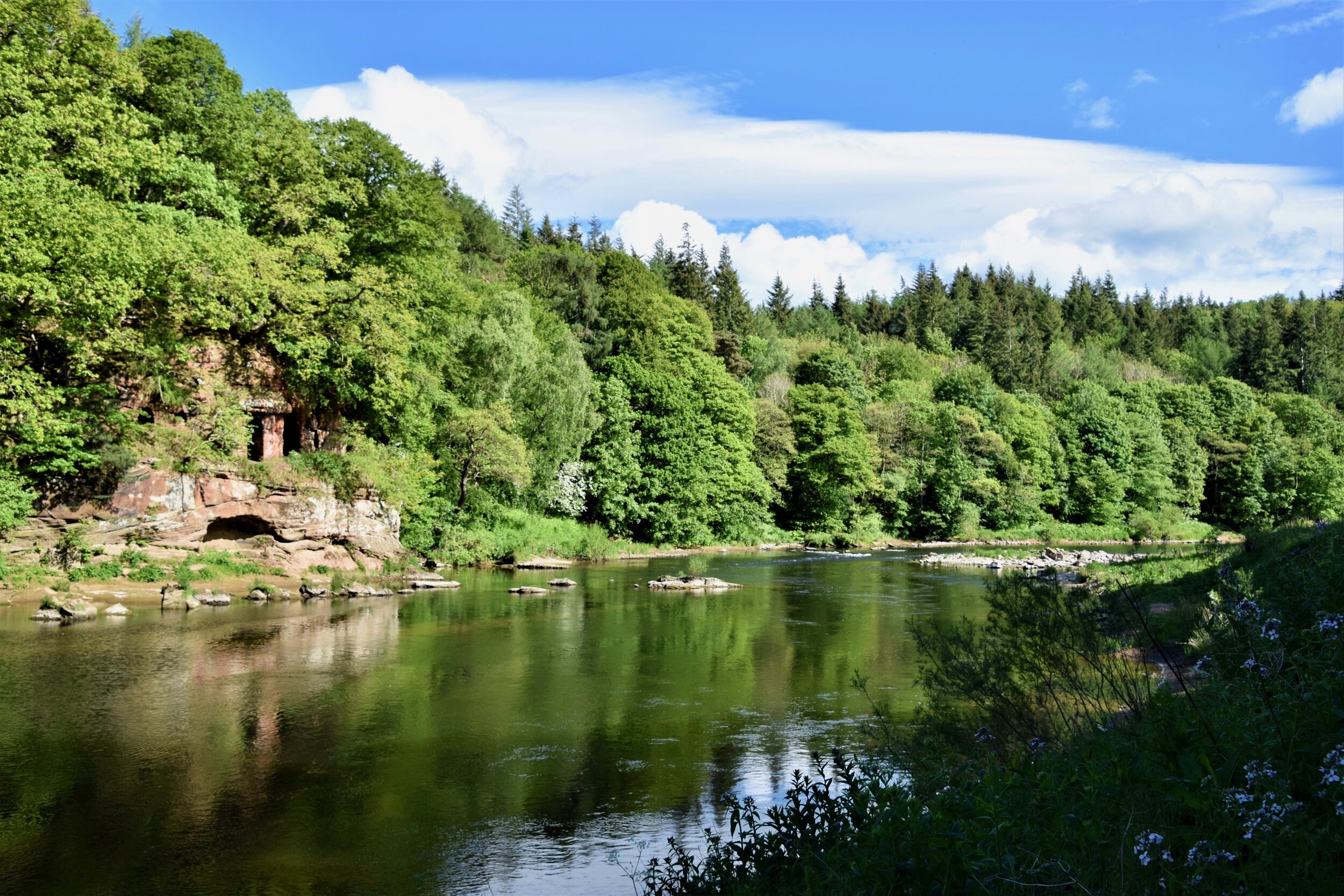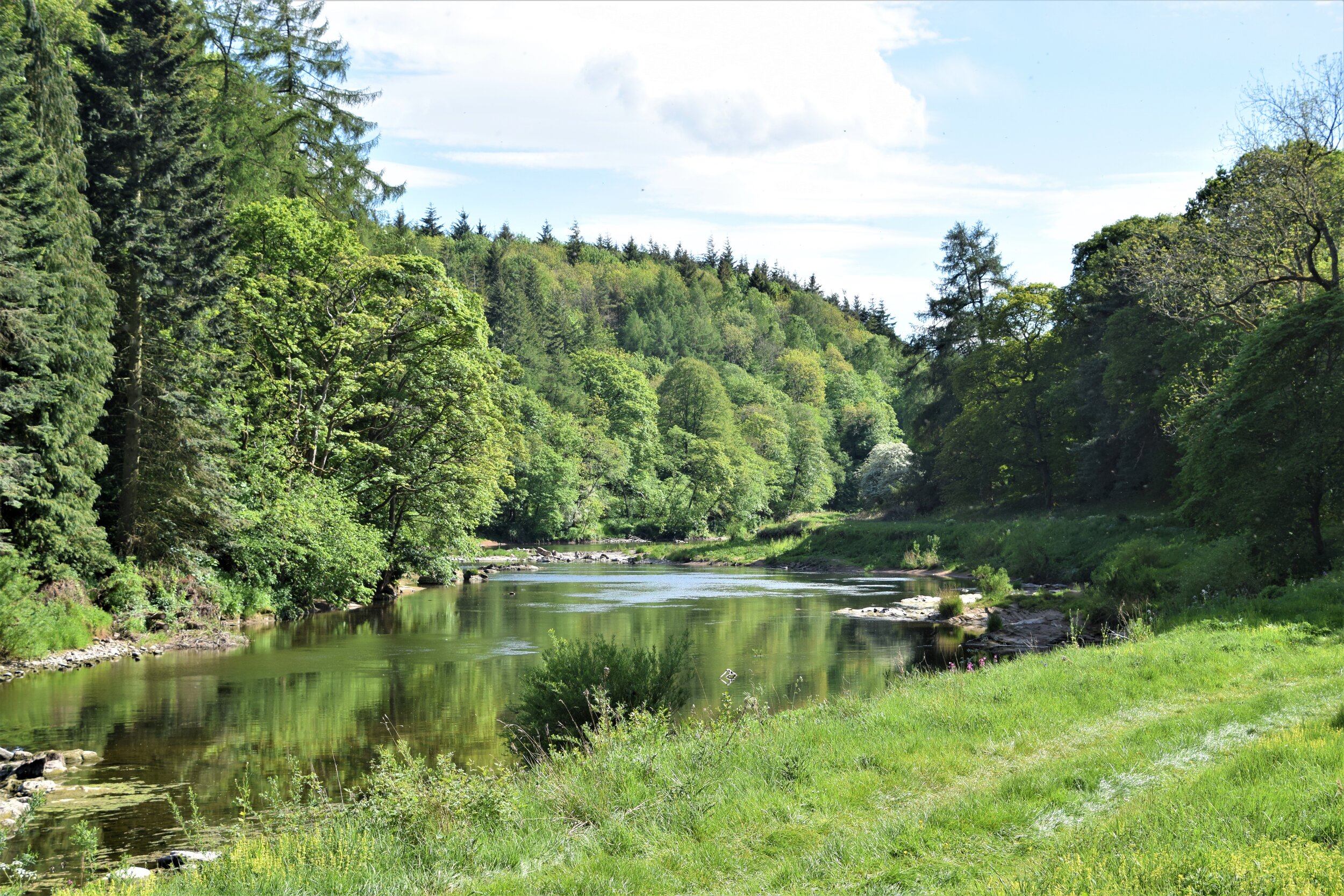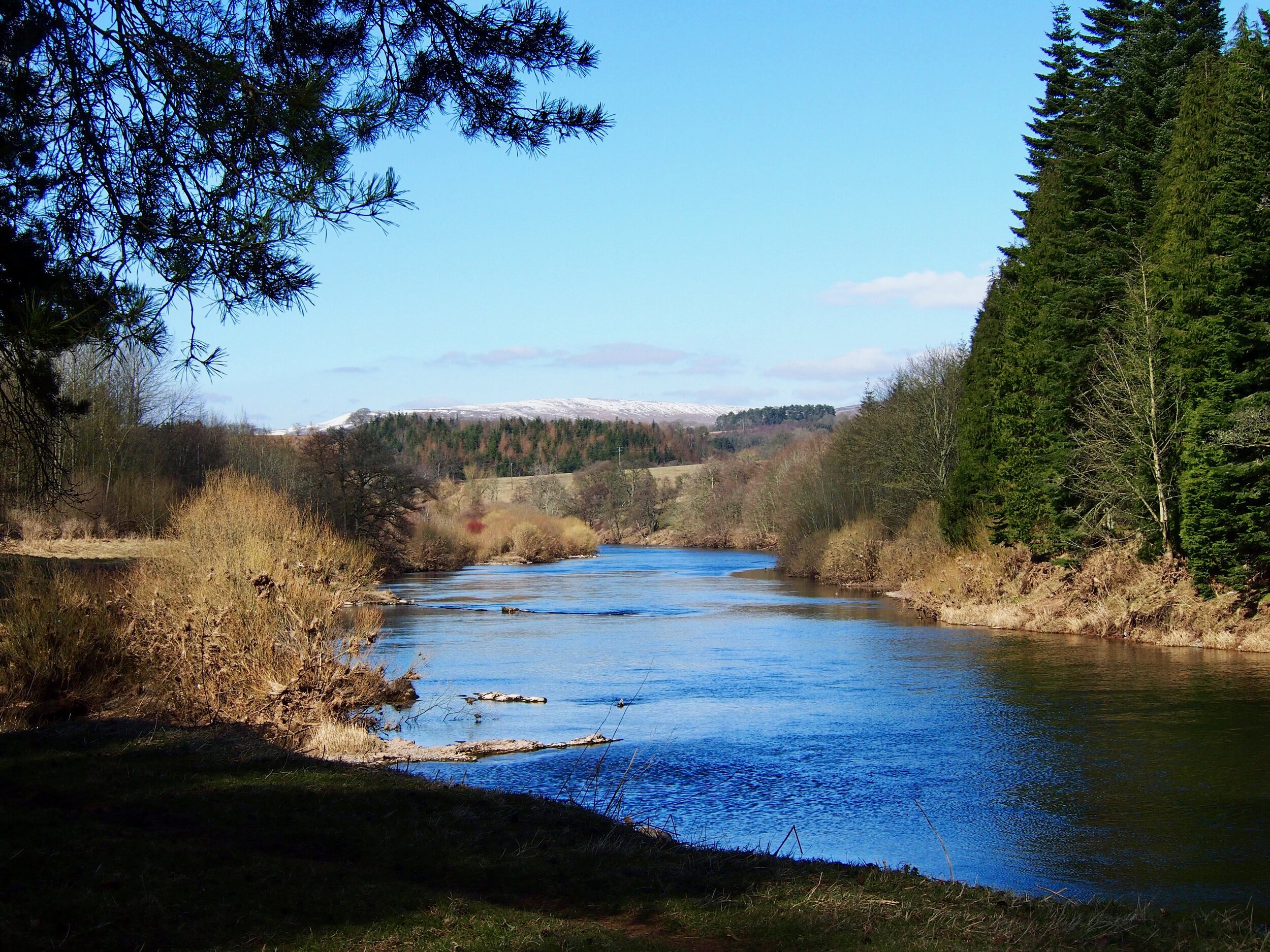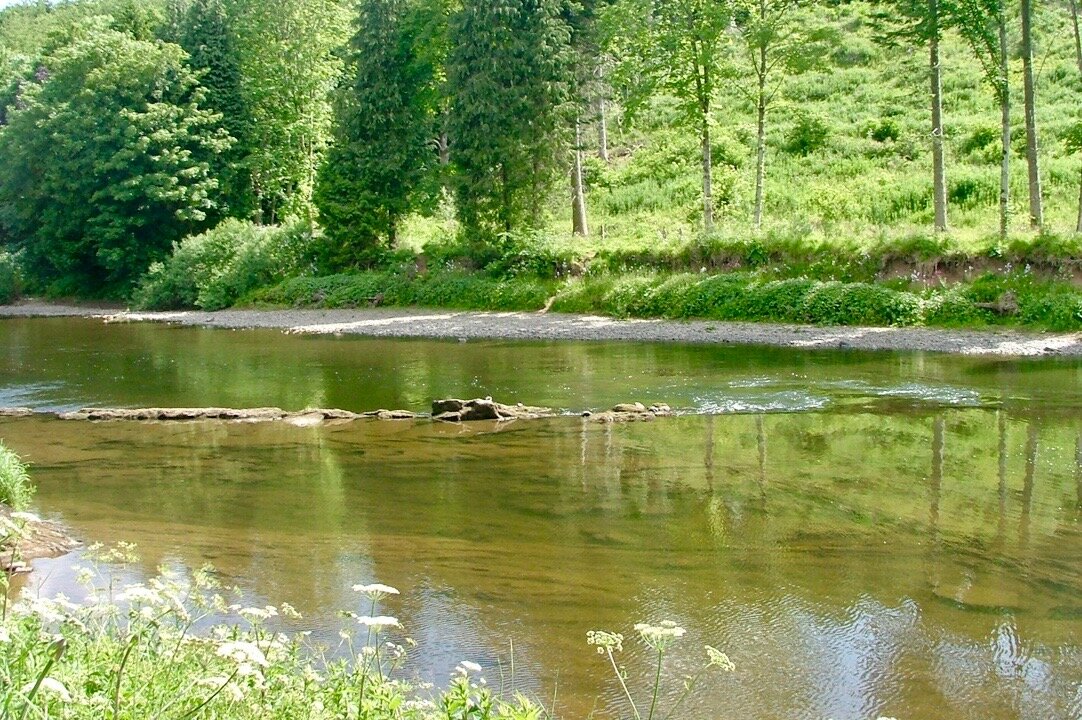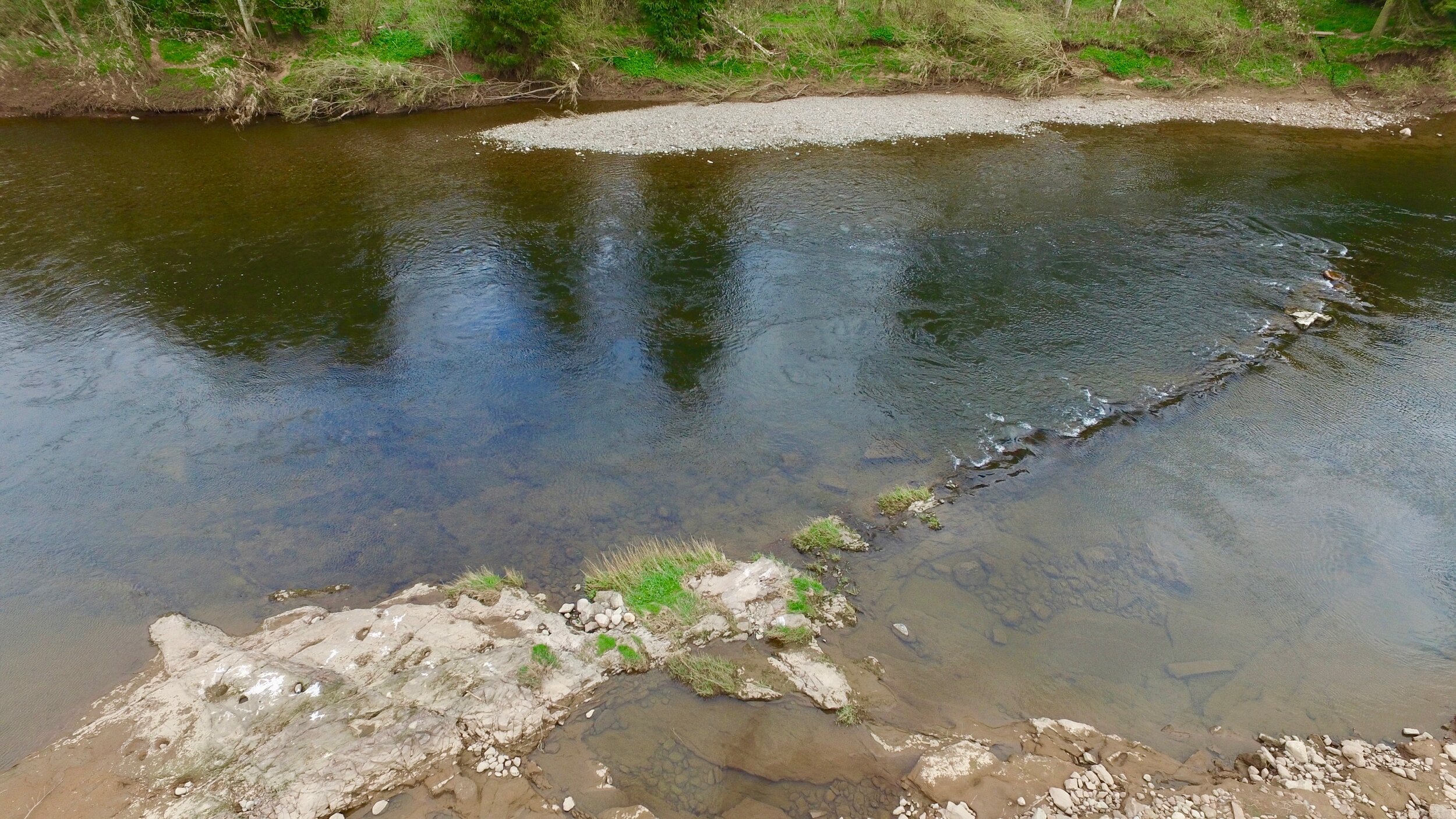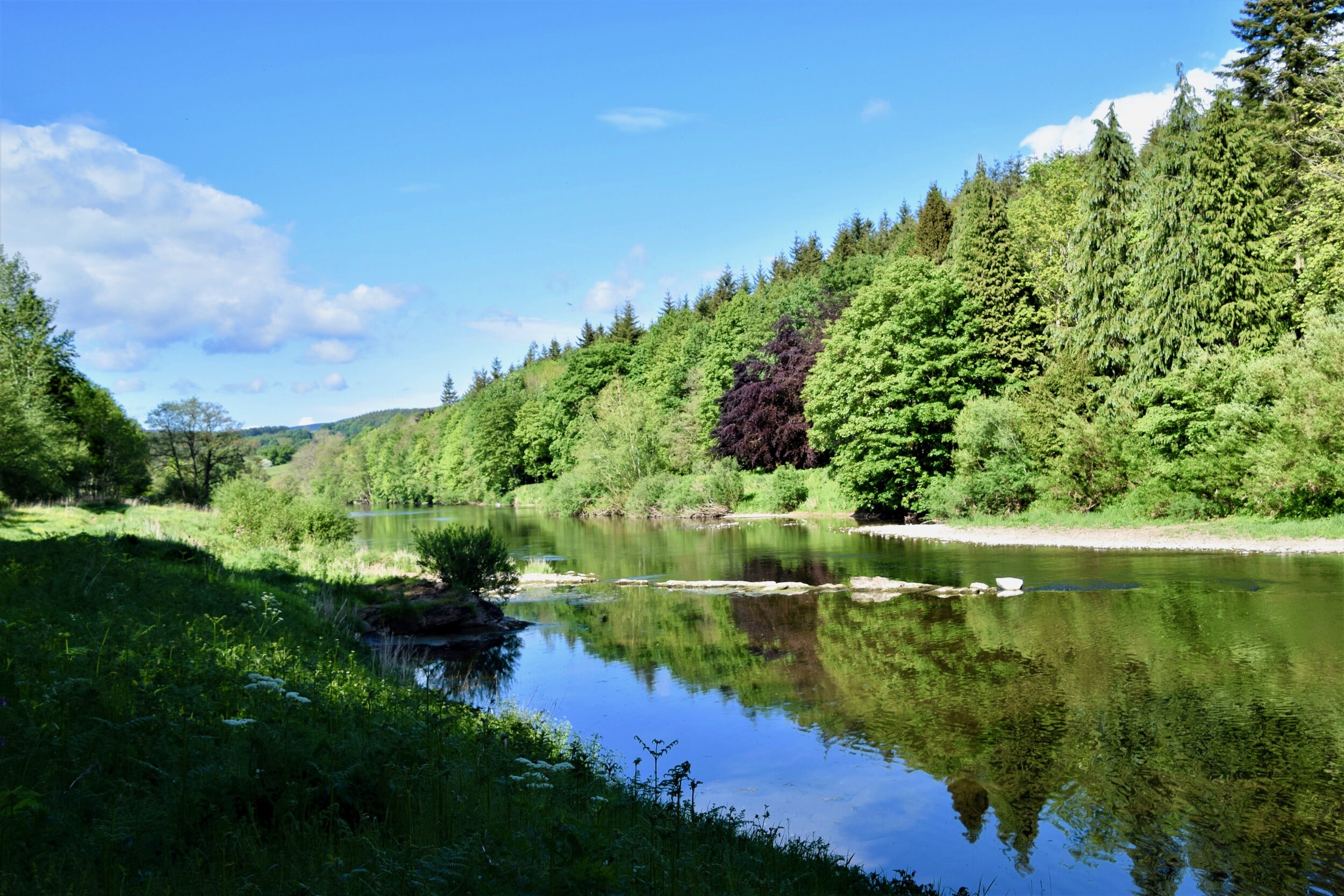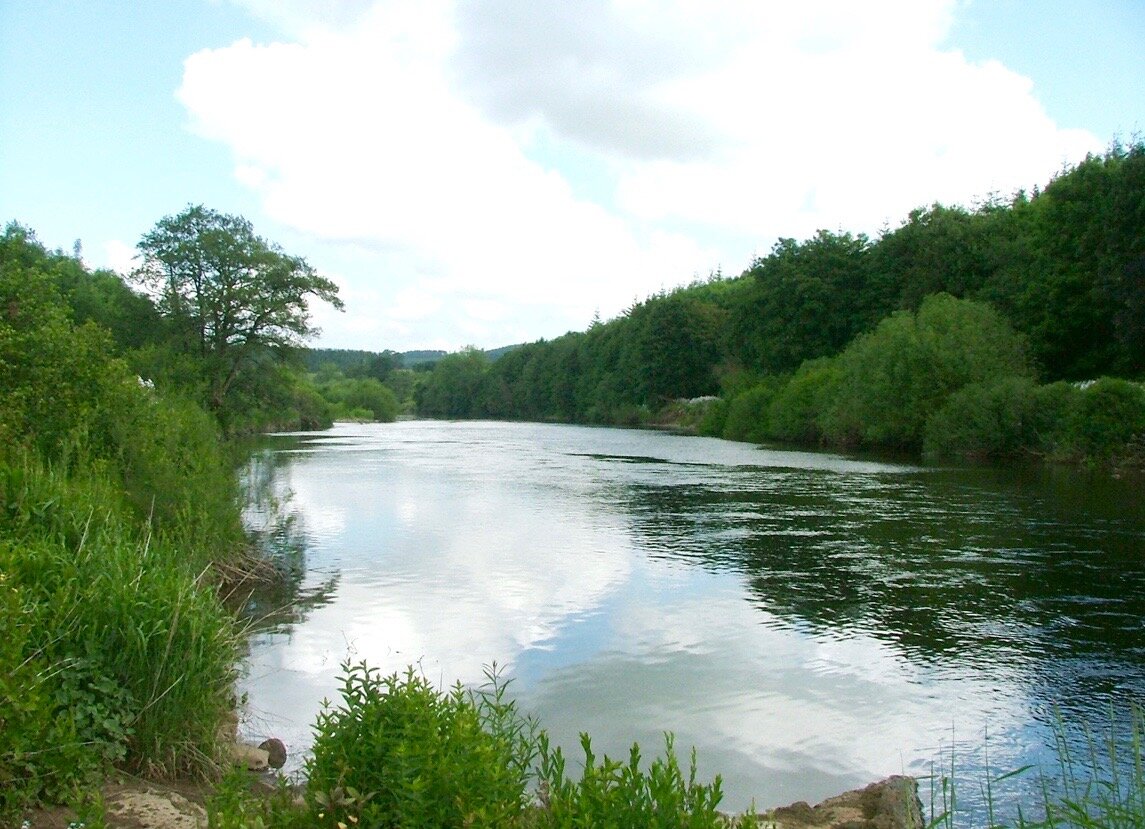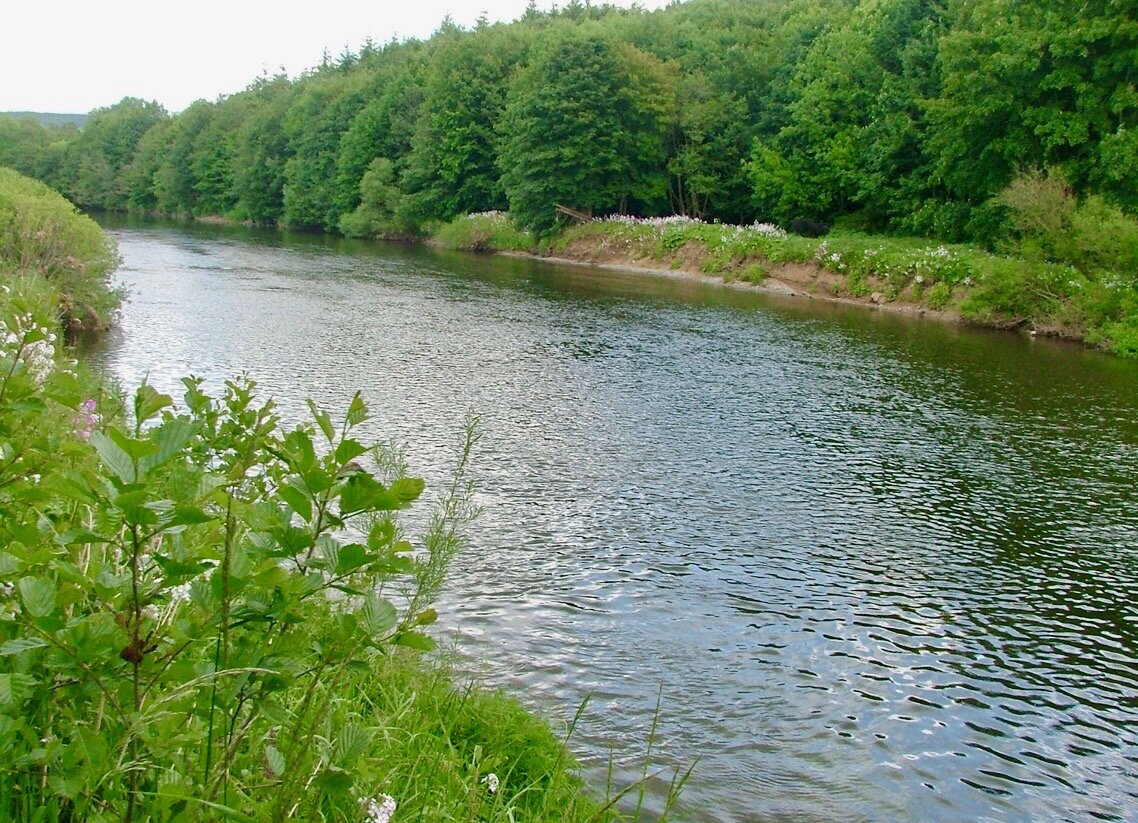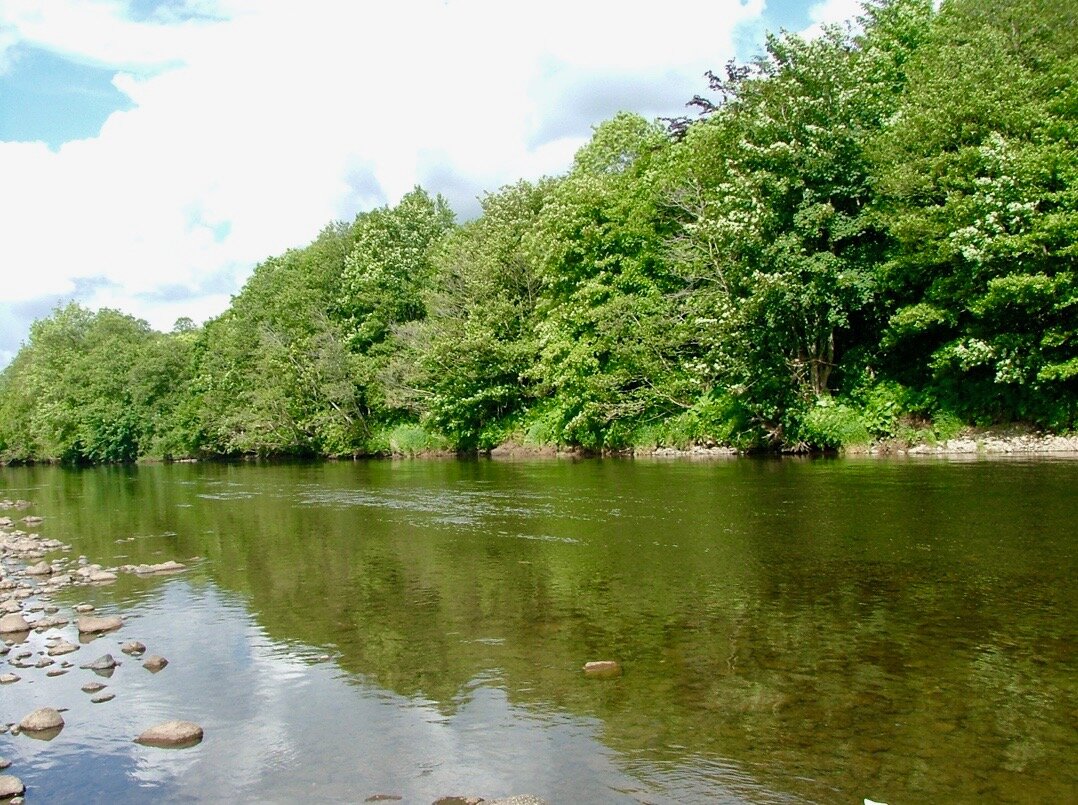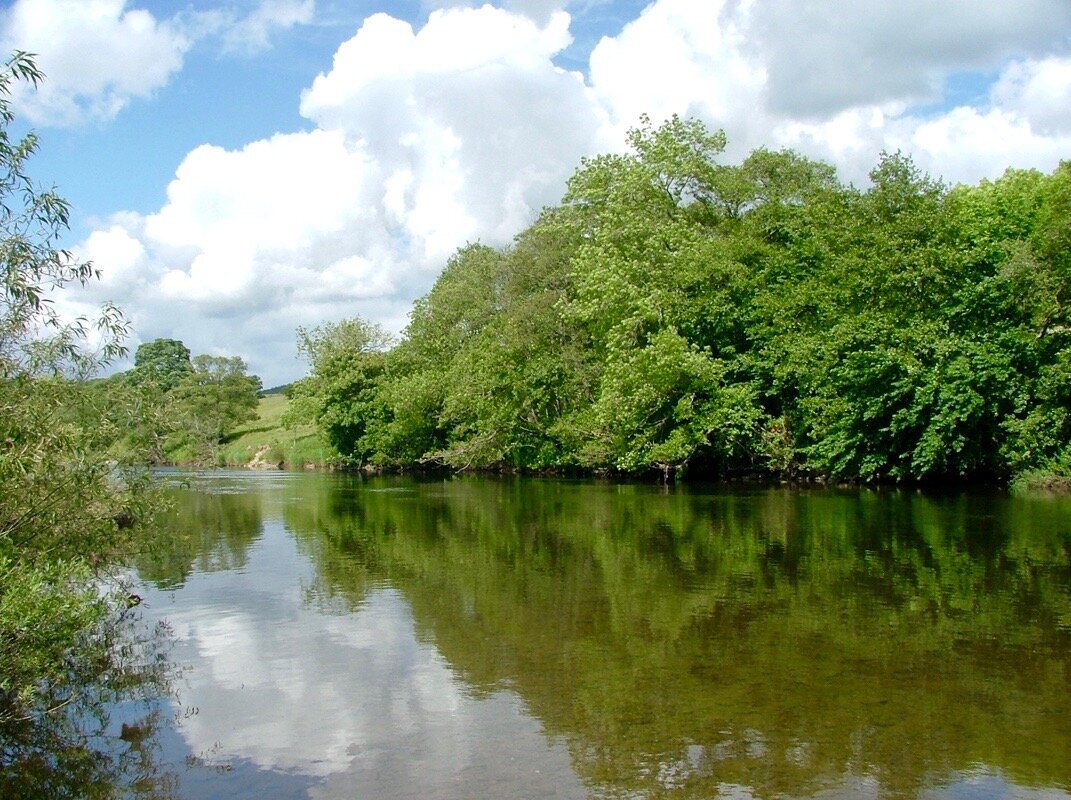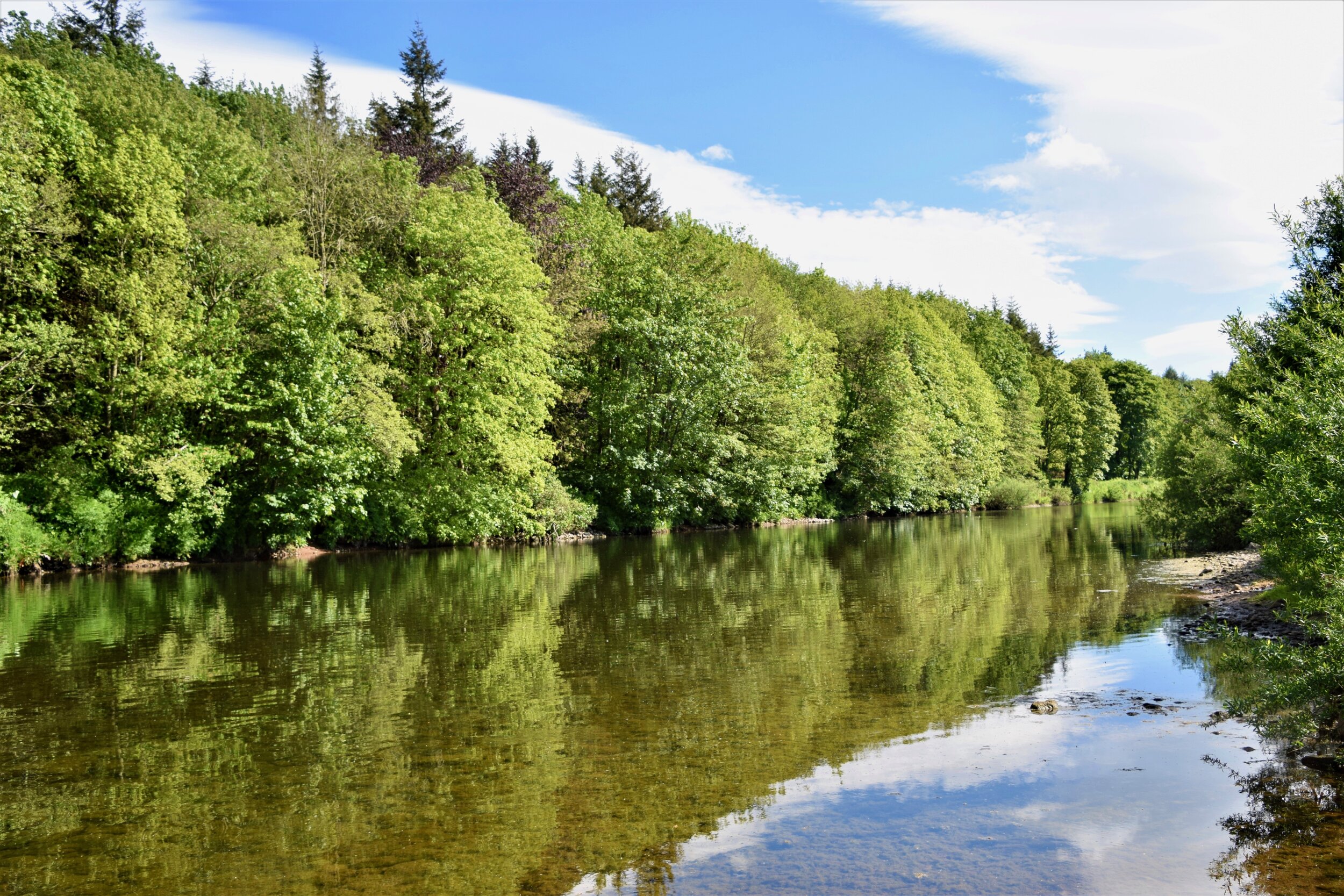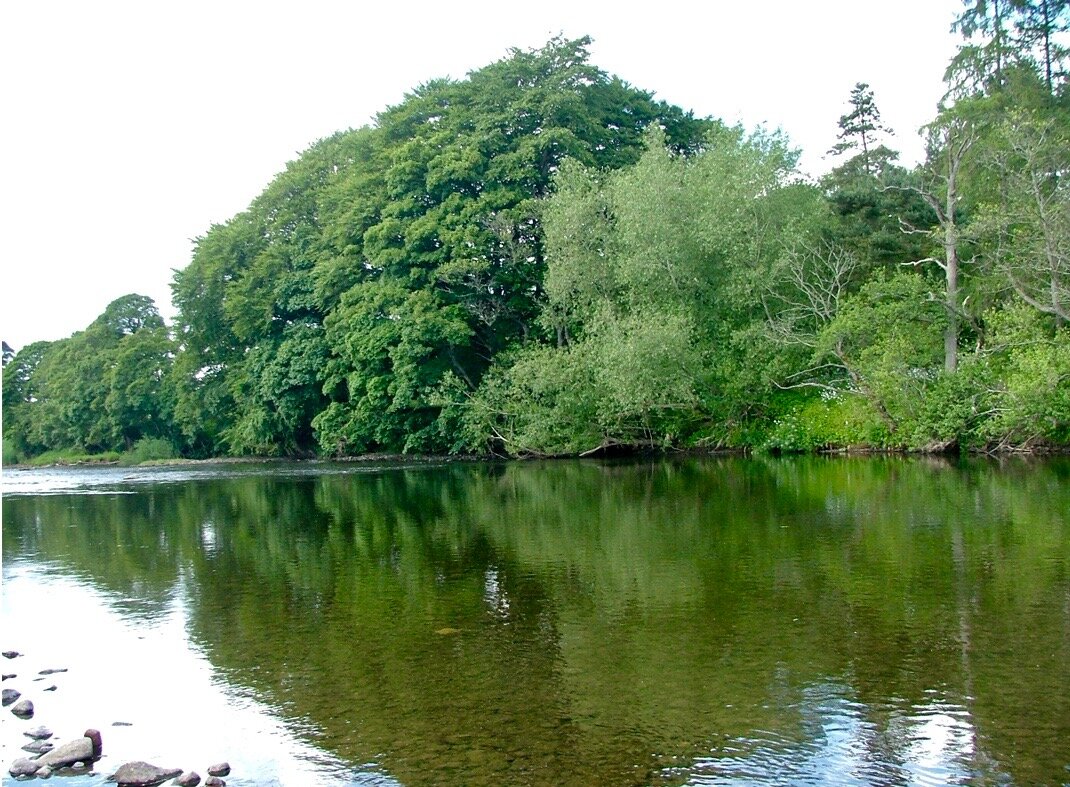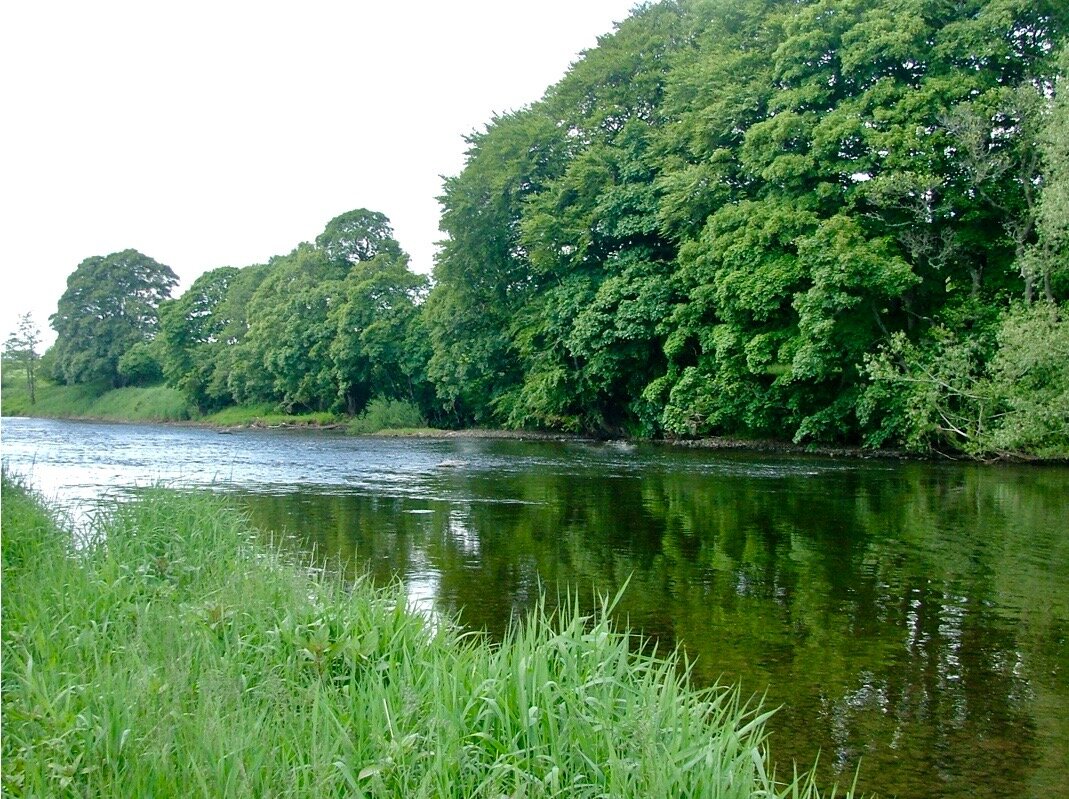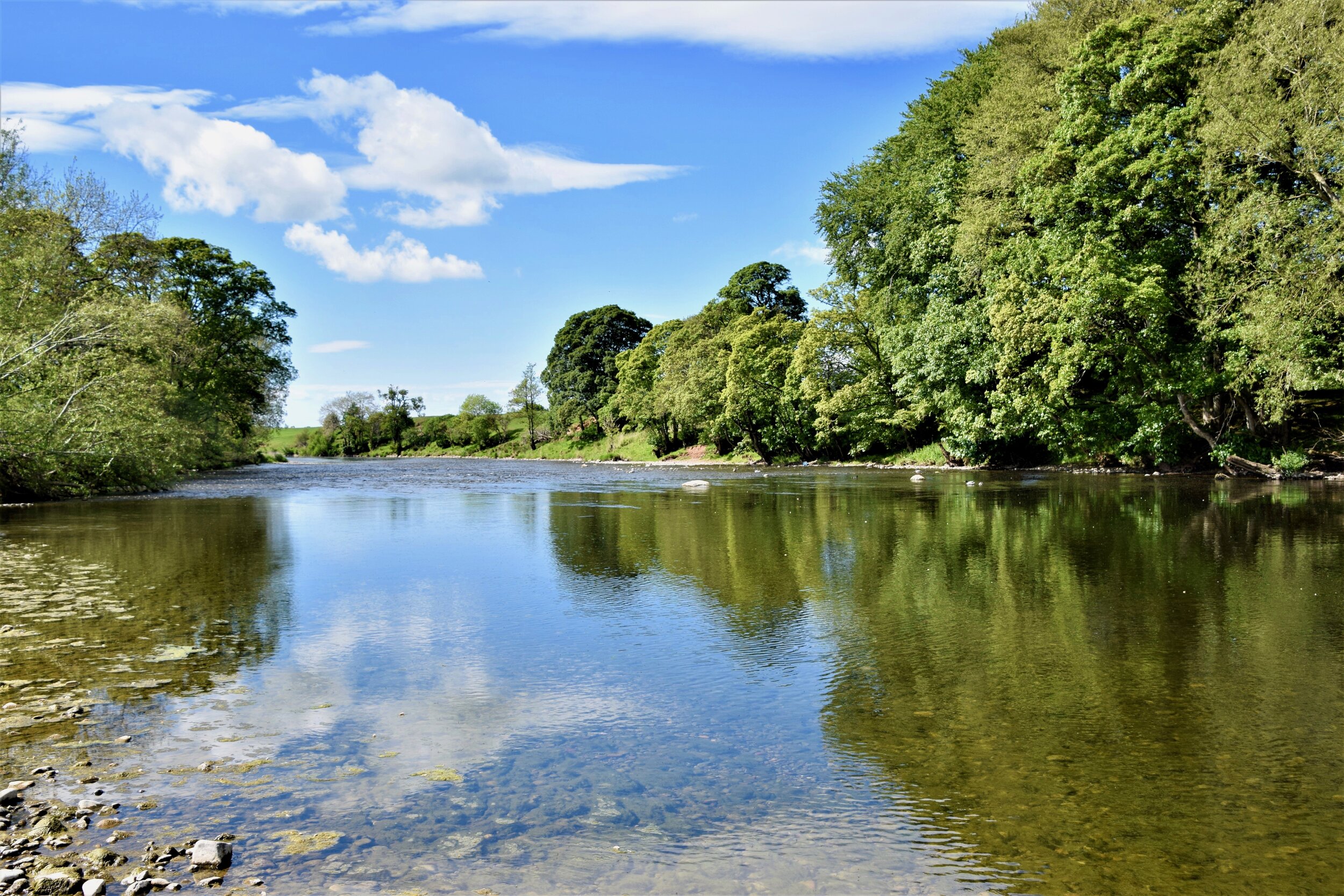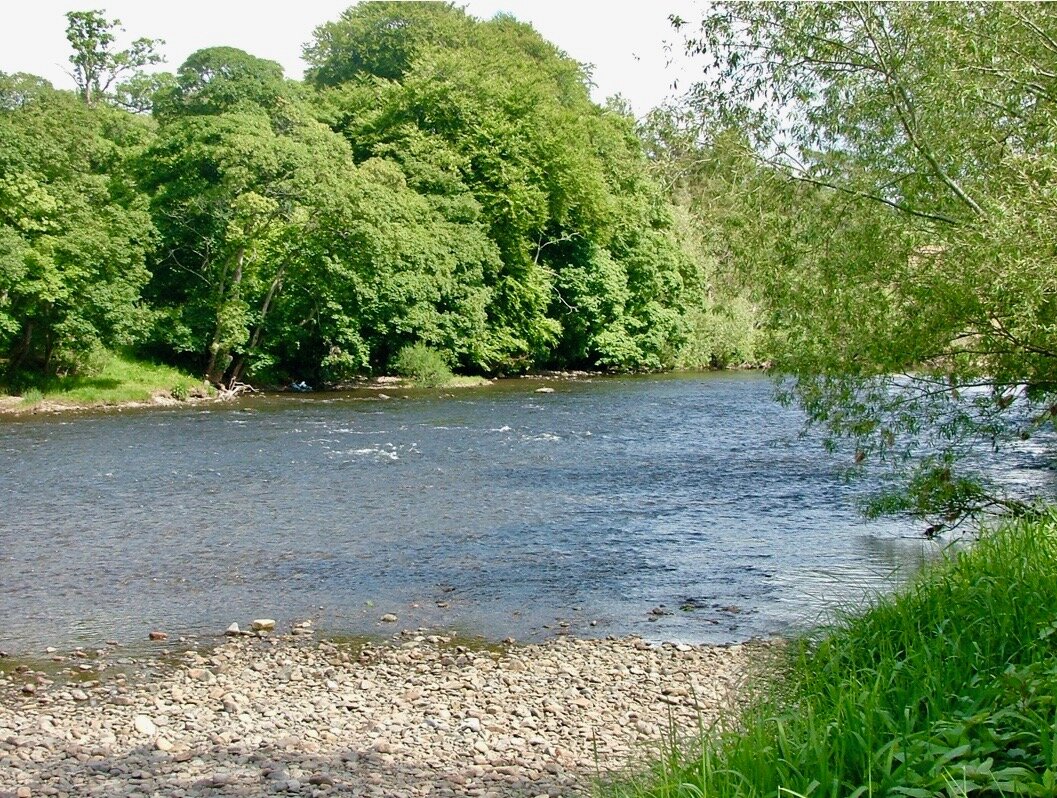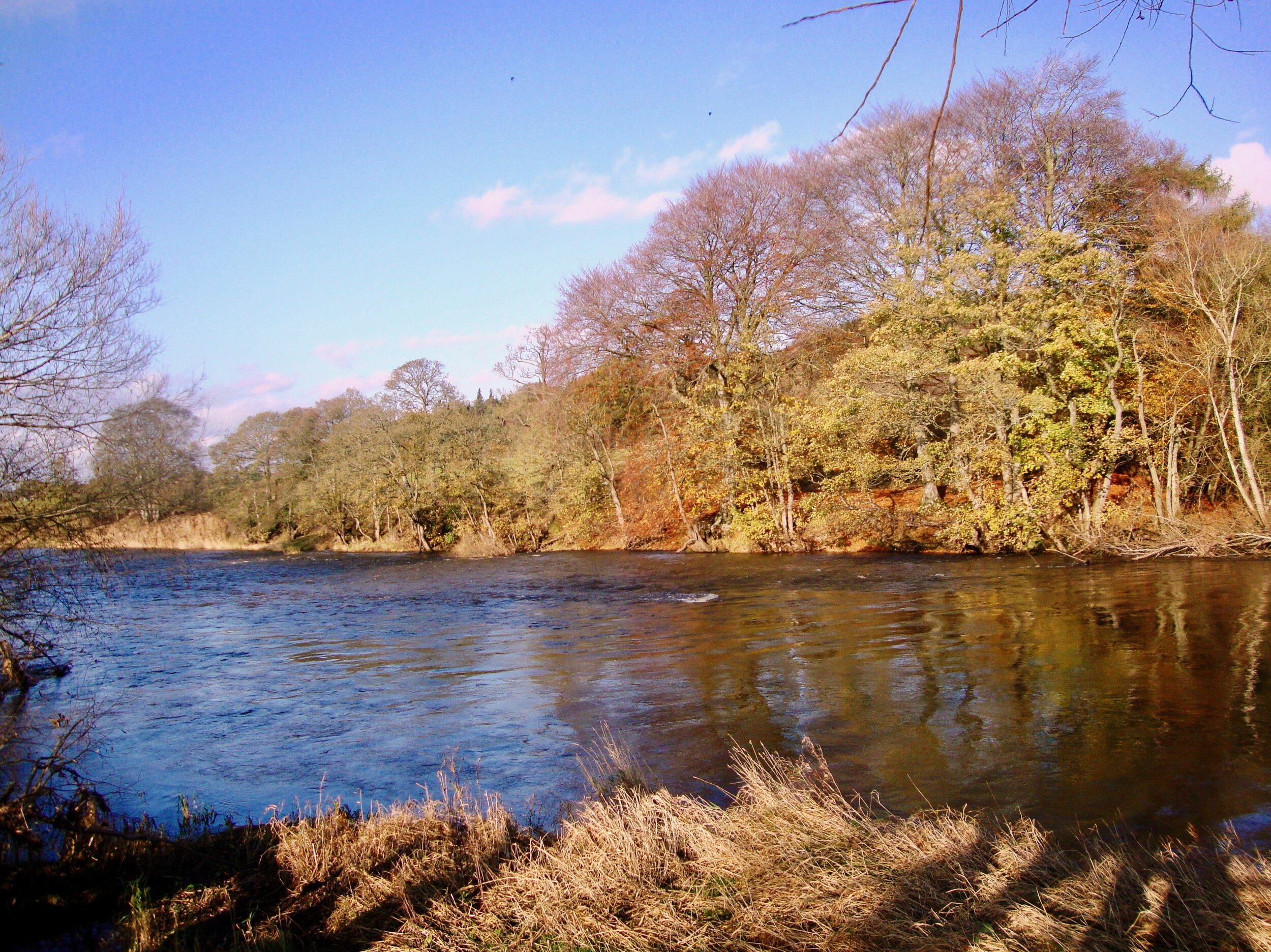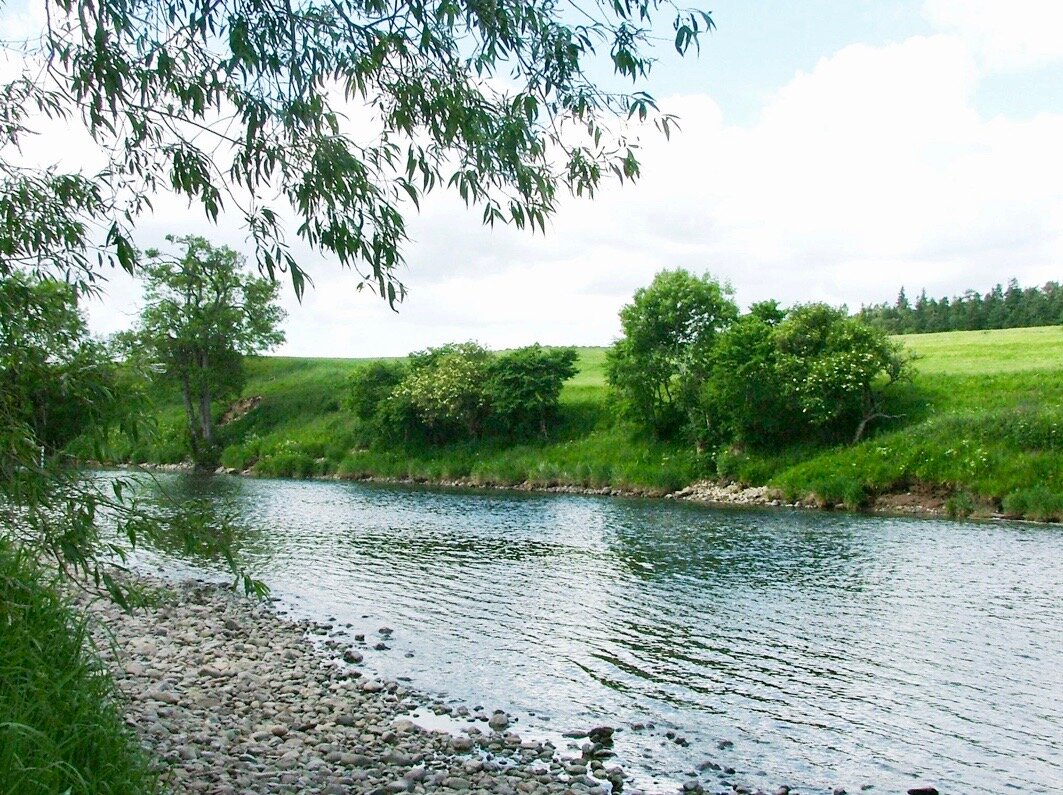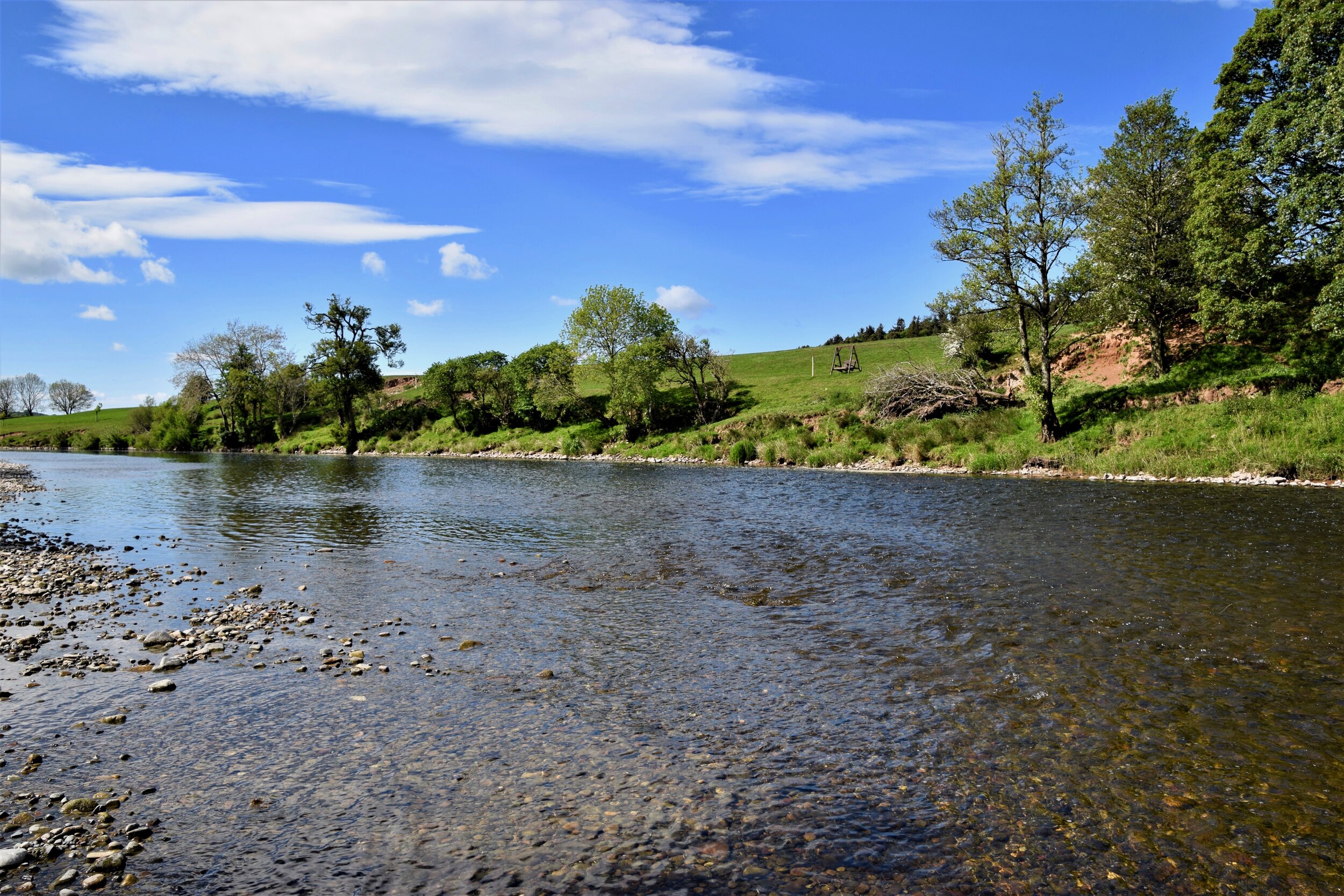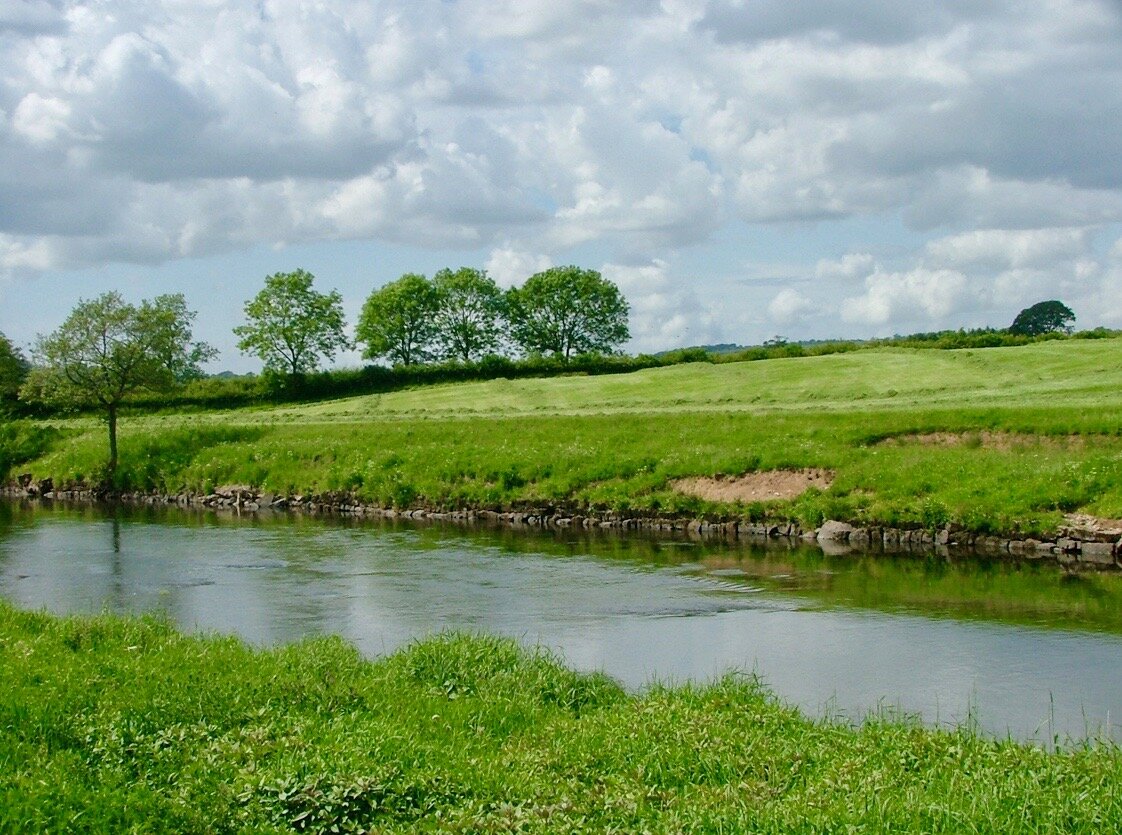1 - The Viaduct
2 - The Meadow
3 - The Falls
4 - Long Meg
5 - The Bathing Rock
6 - The Sandbank
7 - The Caves
8 - The Three Rocks
9 - Johnstone’s
10 - The Willows
11 - Lower Willows
12 - The Post & Island Foot
13 - Daleraven
14 - The Mains & The Wall
15 - The Gravel Bed
Click here for Location & Parking instructions.
If you want a hard copy of our Pool-by-Pool guide with loads of additional information, then please download our Paper Ghillie.
Victor Gubbins (1936-2022) provided us with detailed information and precious insights on the 15 pools that comprise the Eden Lacy fishery on the River Eden. Feel free to contact us if you have anything else to add.
1. The Viaduct
The TOP BOUNDARY is where the stream enters the river at the CORNER POOL – a small channel about three quarters of the way across the river – worth a few casts, particularly when Grilse are running.
UPPER, MIDDLE and LOWER VIADUCT STREAMS: the best fly water from mid-April and excellent Trout water.
A low water pool – be careful not to wade out too far as most of the fish take on our side of the streams, often ‘on the dangle’.
Note: Victor caught his first salmon here in 1951 (aged 15) weighing 14lbs from the other side of the bank!
2. The Meadow
Fish lie from underneath the electricity wires down to the top of THE FALLS but especially under the trees by BROWN OWL CAVE (the old boathouse carved into the sandstone) – a deceivingly long cast.
3. The Falls
Really good trout water. When the river is very low you can wade across the rocks on top of THE FALLS and fish the far stream, although this is not recommended for the faint hearted! Please remember that wading is inherently dangerous. Otherwise cross the MILL RACE (foreground of first picture) and fish the nearside run.
The foam in the second photograph, foreground, is caused by the alkaline tributary of the River Lowther mixing with the more acid waters of the Eden and Eamont. It is not pollution!
4. Long Meg
A high water pool. One of the many holding pools and a good spring pool. Pre-1966 (when Eden stocks were devastated by ulcerative dermal necrosis or UDN disease) it was estimated LONG MEG held well over 100 Salmon.
The pool fishes all the way down, depending on the time of year and the height of the water. It is worth starting high up as fish can lie in the top nearside ‘V’ (extreme right of the first picture). In summer low water, as shown, you can wade to the middle rock and fish the far stream. The far side ‘V’ can hold Sea Trout from early June.
Best fish taken:
28 lbs by WMG (Victor’s father). LONG MEG (waiting to be beaten!)
25 lbs by Victor Gubbins. BATHING ROCK
Both fish are outlined in the sandstone slabs outside the front door at Eden Lacy.
The tail of the pool is THE BATHING ROCK.
5. The Bathing Rock
This lie is at the tail of LONG MEG.
The main high water lie is on the submerged sandstone slab in the centre of the river between the actual bathing rock (more visible in the first picture) and our bank.
6. The Sandbank
A spring high water pool and also a Kelt hole.
A long cast square at the top can be successful - also where the stream comes into the river on the opposite bank. In low water, fish right down the glide, the run into THE CAVES pool.
7. The Caves
A low water pool. Fish mostly take off the sloping shelf on the far side and at the tail.
8. The Three Rocks
A high water pool, named after the three rocks on the opposite side. The big rock in the centre is nicknamed Skiddaw. The ideal height seems to be when Skiddaw is 1 foot out of the water (it’s a bit more in the first photo). Fish generally take in the midstream but sometimes lie very close to our side around the new lies.
9. Johnstone's
Named after a one-time owner of Eden Lacy. The pool holds the record for the fishery: 34 lbs (from the opposite bank).
The best casts are at the neck, off the bend on the far side, around the rock in the centre and particularly, in the autumn, at the tail of the pool before it enters THE WILLOWS stream.
10. The Willows
This used to be one of the most prolific pools on the beat (pre-UDN) and now is beginning to yield numbers of fish again from both banks.
Don’t be tempted to walk out along the rocks to fish the neck – you’ll frighten off any fish.
Fishes at all heights.
11. Lower Willows
A high water pool only – except for Trout.
There are a few big boulders a few metres out. The fish can rest around them, particularly after a flood and when they are running.
Start about 10 metres below the tree (in the first photo) and fish down to the rough water. It does not require a long cast.
12. The Post & Island Foot
THE POST always referred to the prolific Trout (and Grayling) water at the top of this stretch. There used to be an old post in the river.
ISLAND FOOT is a particularly good autumn stream. It fishes all the way down, as far as you can wade – and beyond! It is also excellent water for Trout and probably Sea Trout.
13. Daleraven
Pronounced Dal-raffen; the lovely Norse name for the beck that enters the river at the tail of the pool.
This is an excellent Trout (and Sea Trout) stretch. The Salmon lie under the far bank, fish down to the run-off. It is best fished on a falling river and is a deep but relatively easy wade at the top - but don’t wade out too far.
Note: Keep your eyes peeled for Kingfishers.
14. The Mains & The Wall
One of the best fly stretches and fishes at most heights and times of year. It is excellent for Trout, particularly the far side at the top of the stream.
Salmon lie from the large Sycamore tree (on the other bank) all the way down, depending on the height of the water. Start higher up in the fast water when Grilse are running.
THE WALL refers to the stretch where the bank support wall starts on the opposite bank all the way down to the big ‘boil’ (a submerged rock) which is the beginning of the GRAVEL BED.
Fish lie down the far side near the opposite bank – another deep easy wade at the top is needed to cover the lies properly but then draw in to our side as you progress down to the bottom of the pool. Fish lie above and in front and just off the big boil!
15. The Gravel Bed
A lovely pool, particularly in the autumn, and our bottom boundary. The main taking places are just above and the far side of the main boil in the centre of the river; opposite the large willow on our side and then all the way down until the line ‘dies’. It is also very good water for Trout and Grayling and probably also for Sea Trout.
Generally a high water pool, it is best fished for resting salmon after a rise in the water and when it is dropping again.


